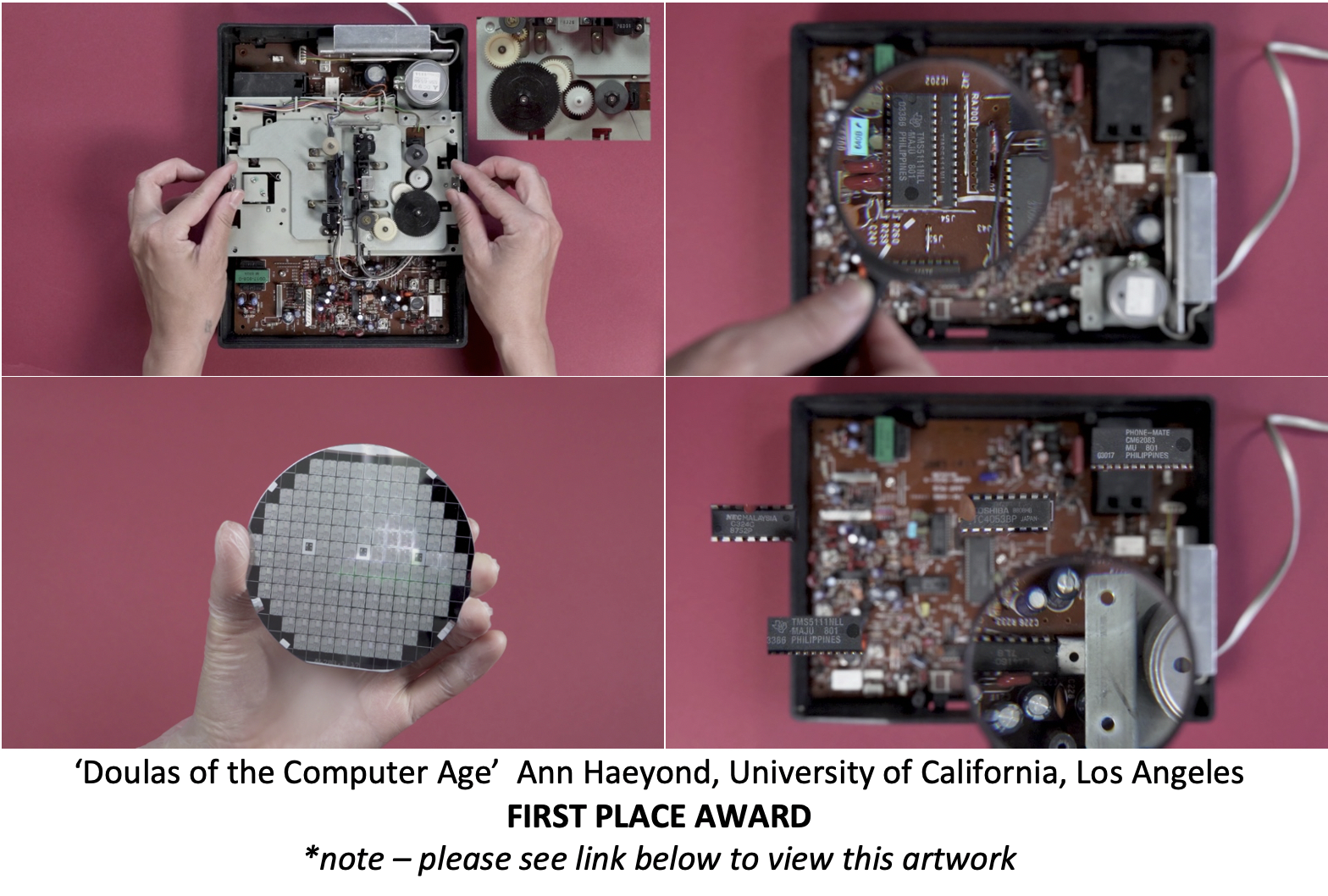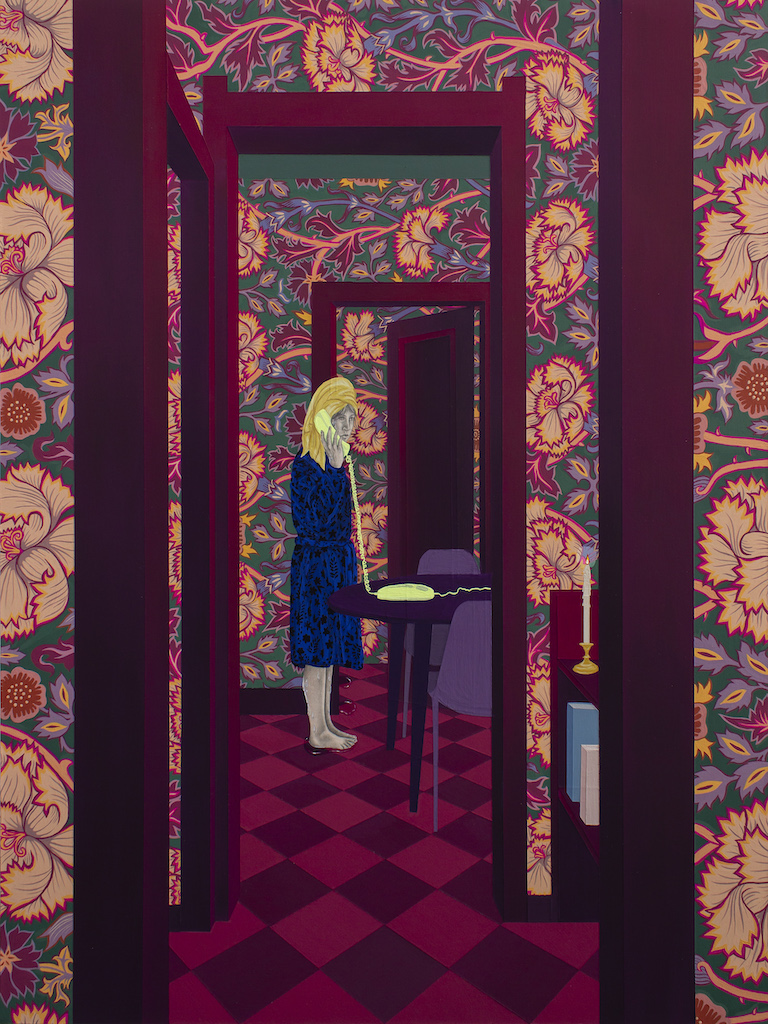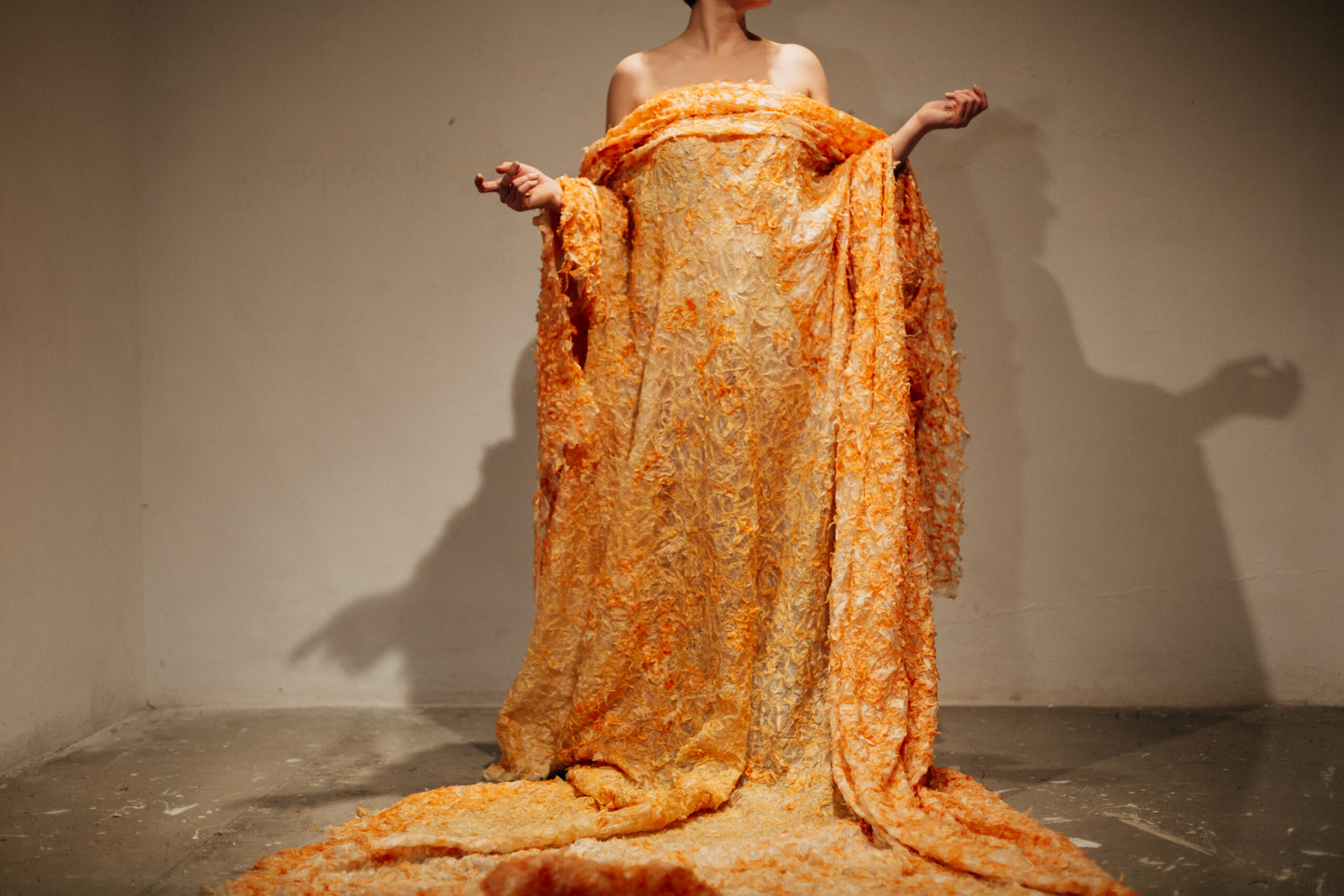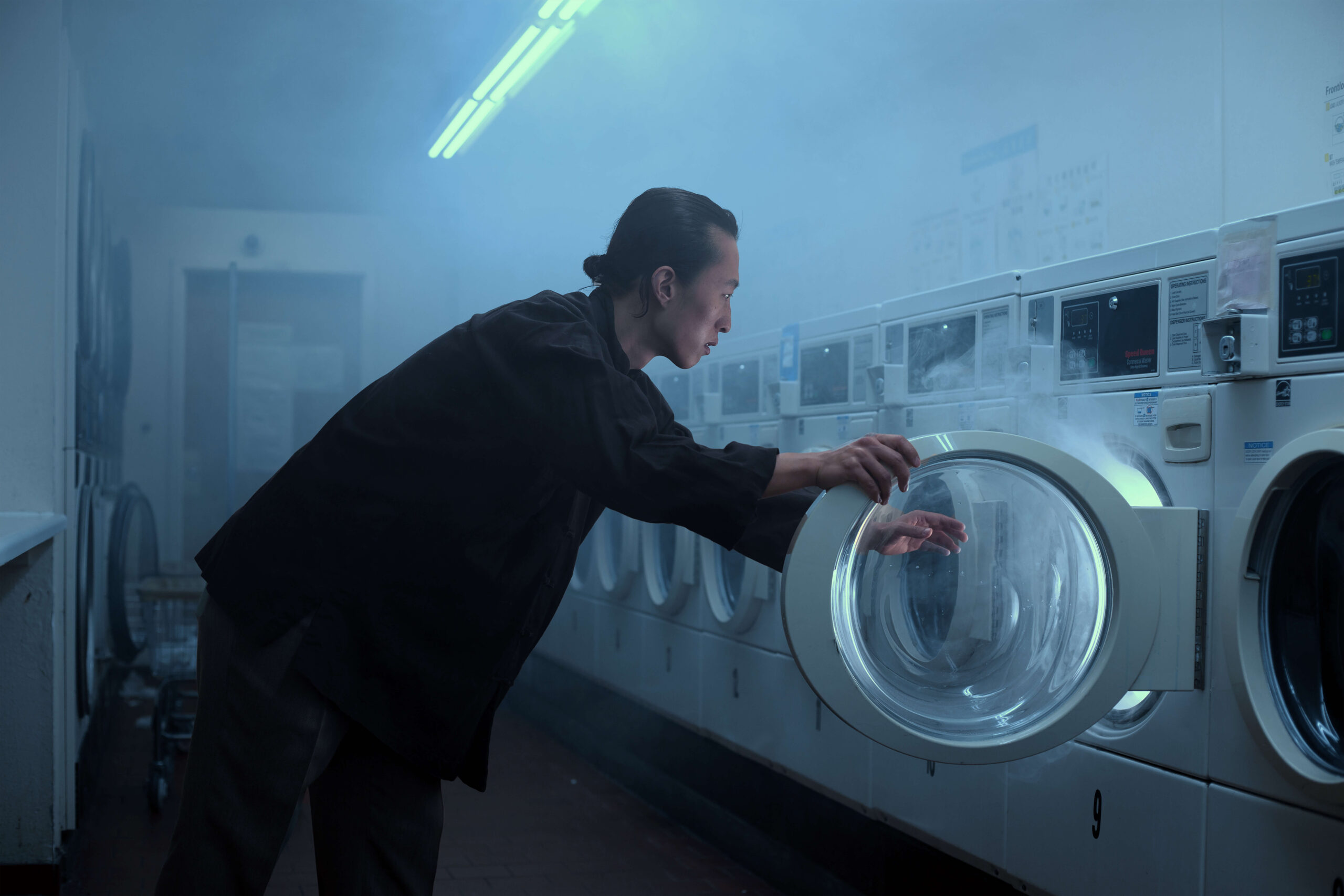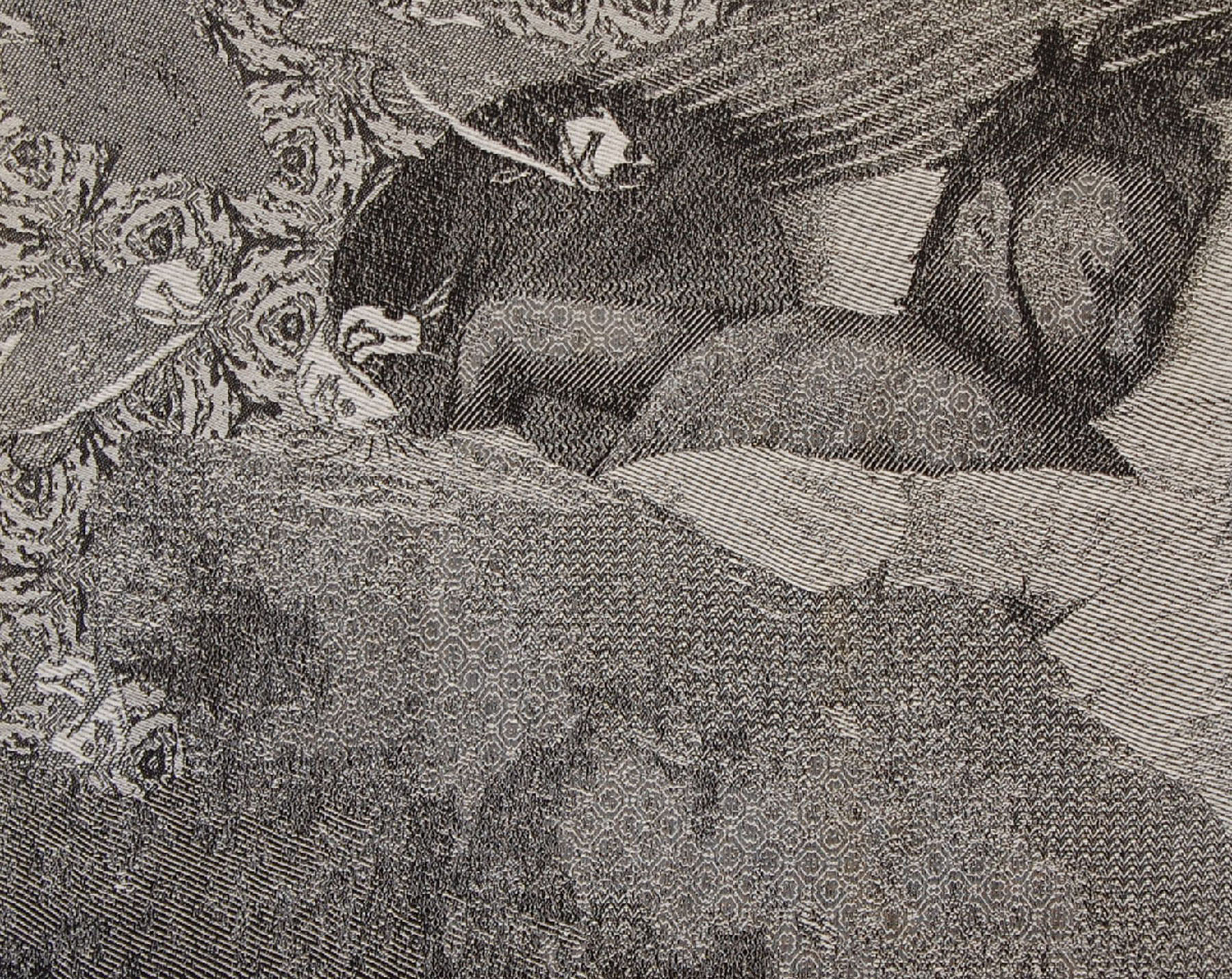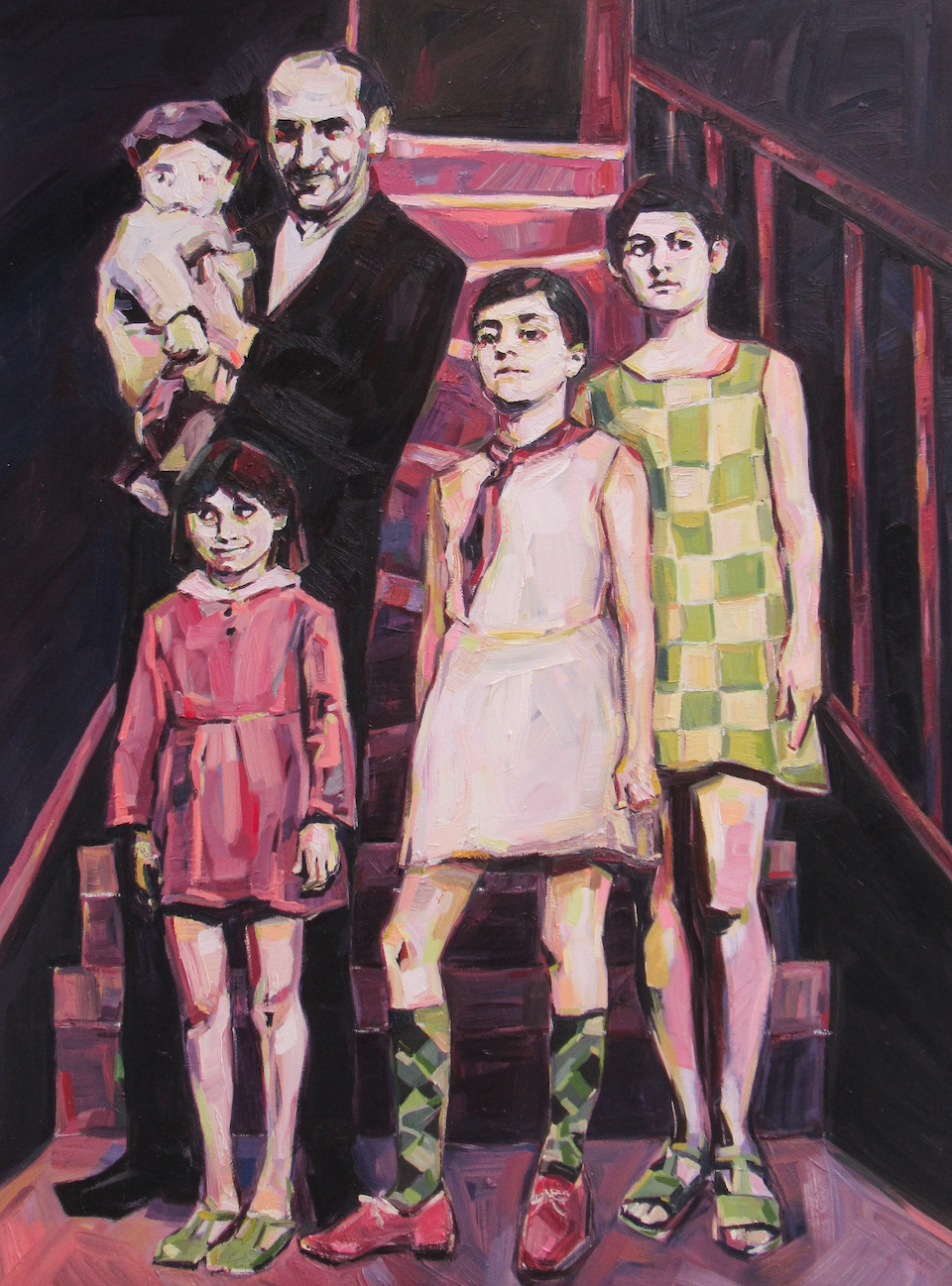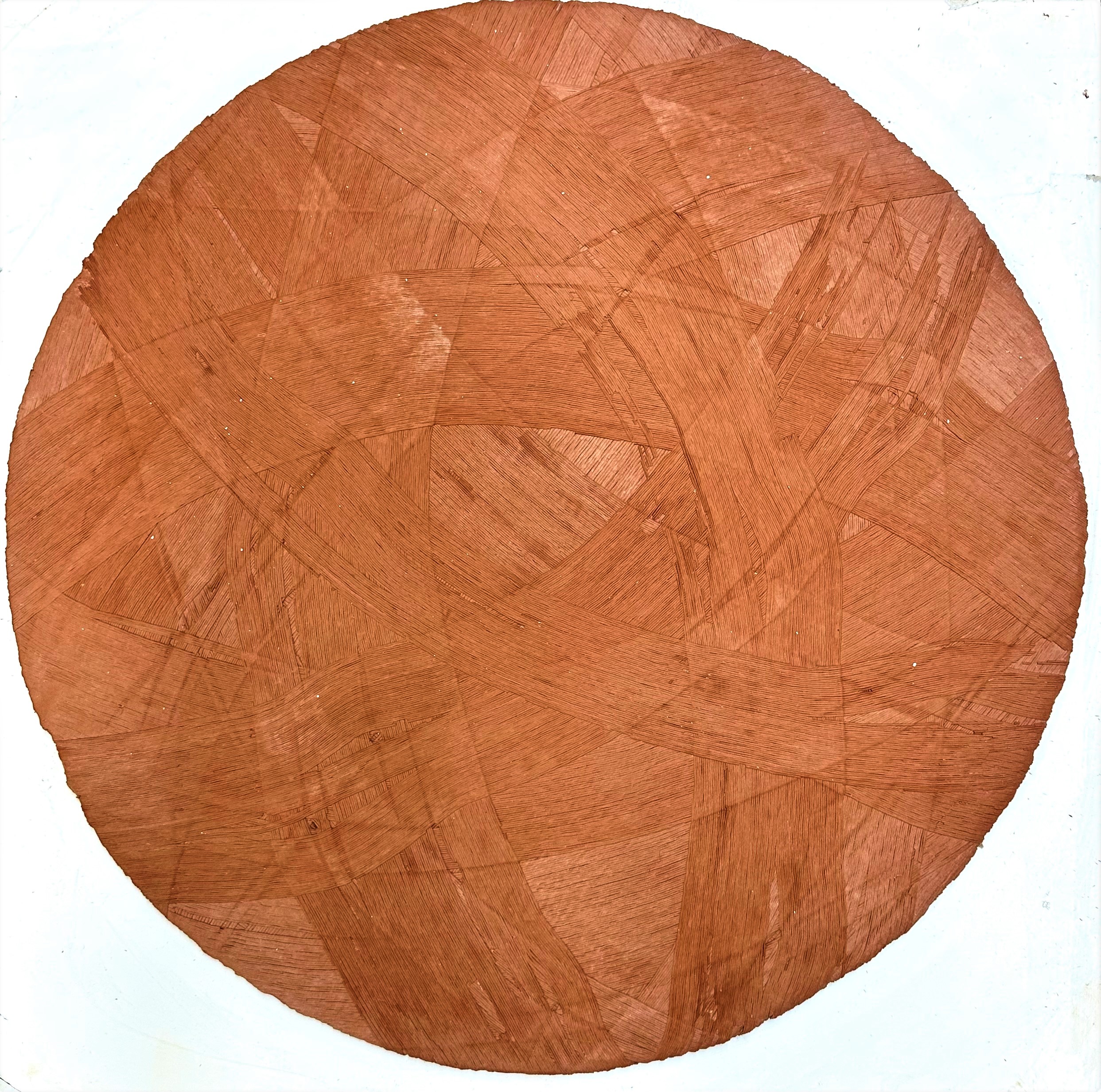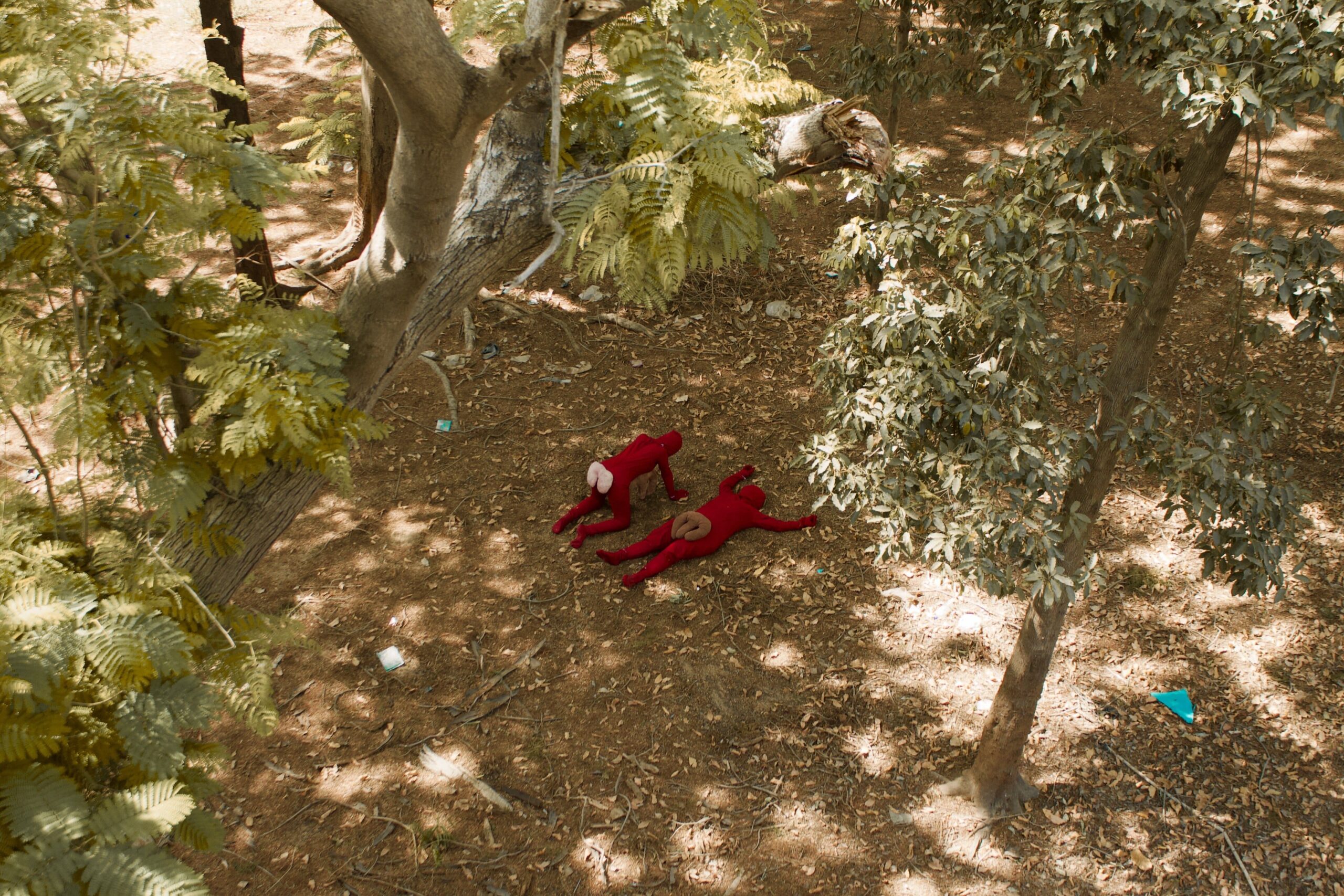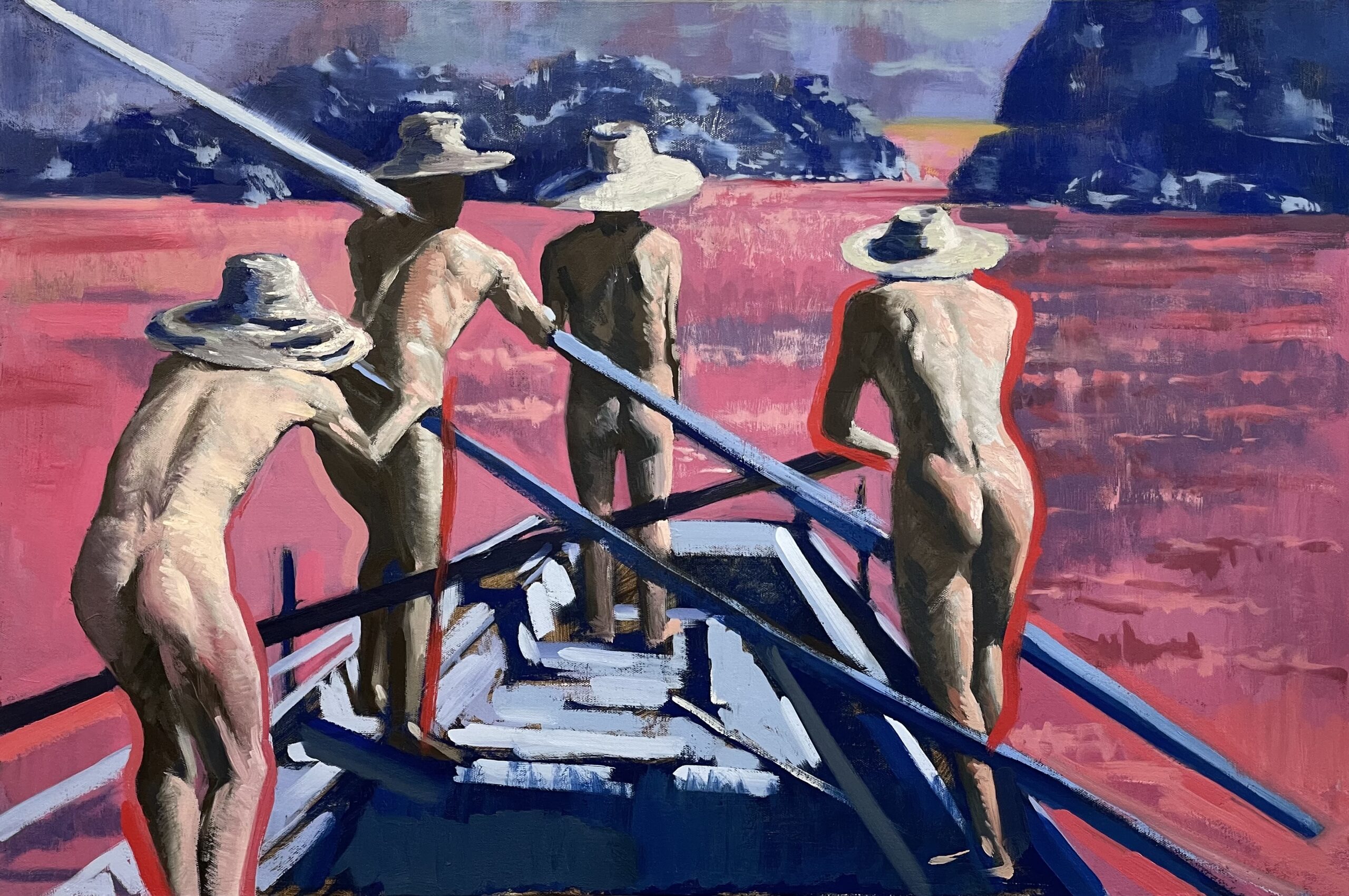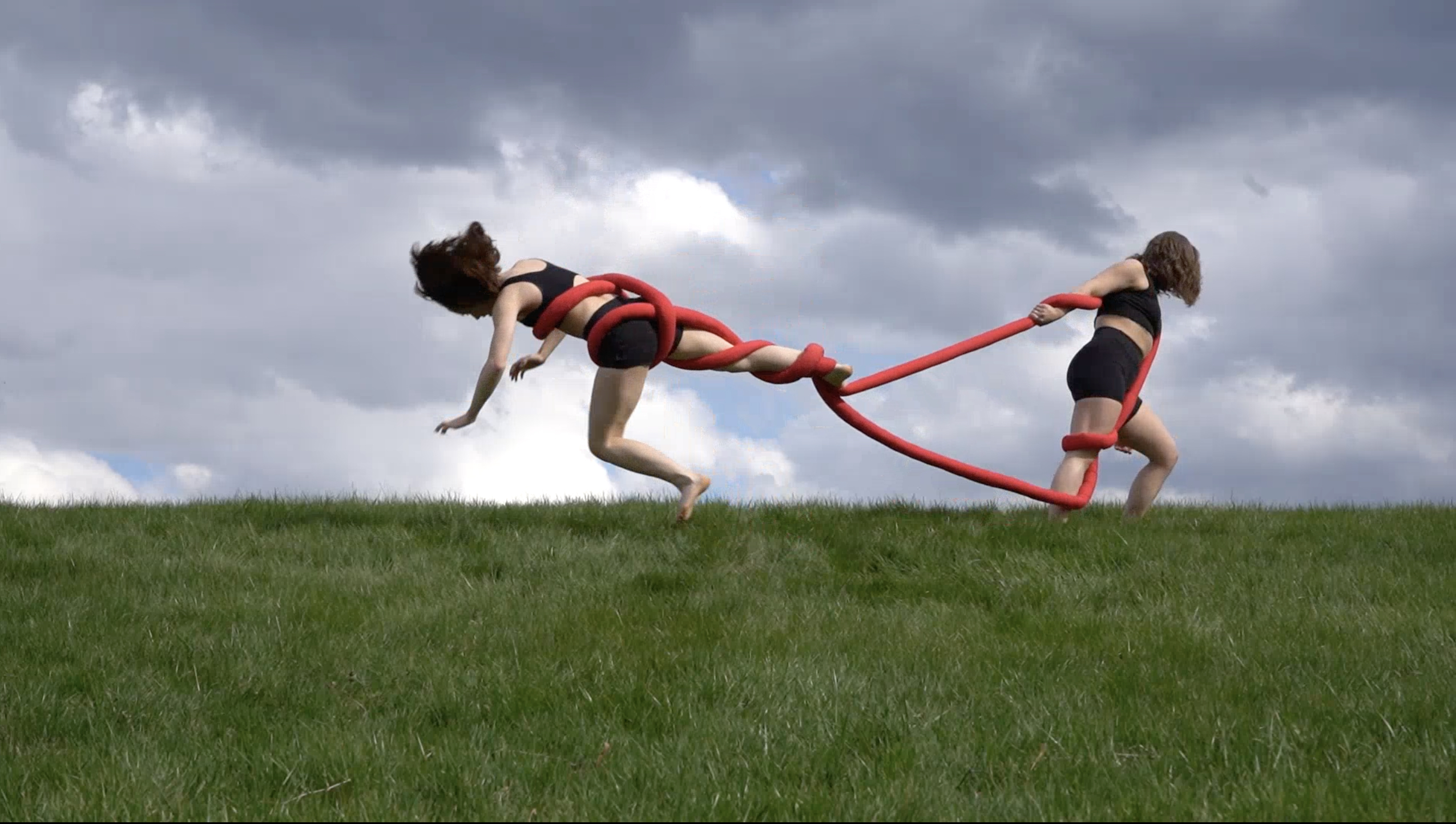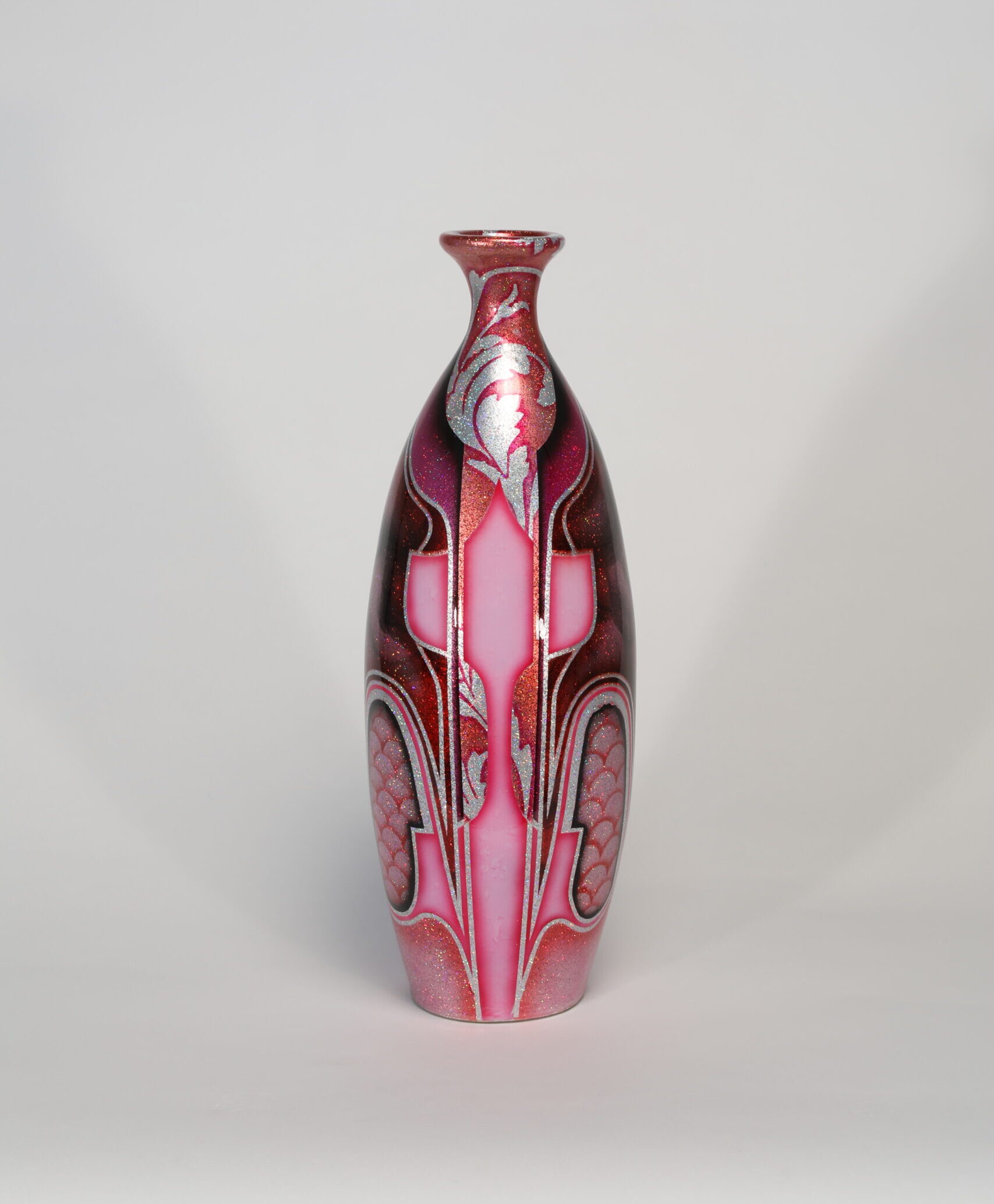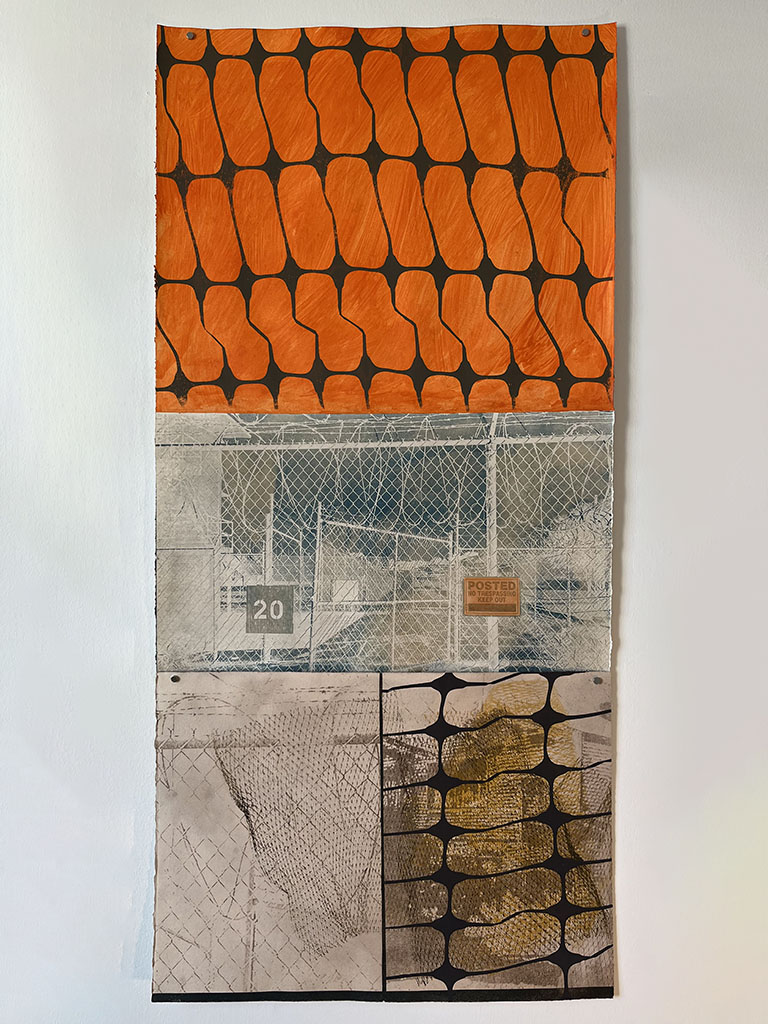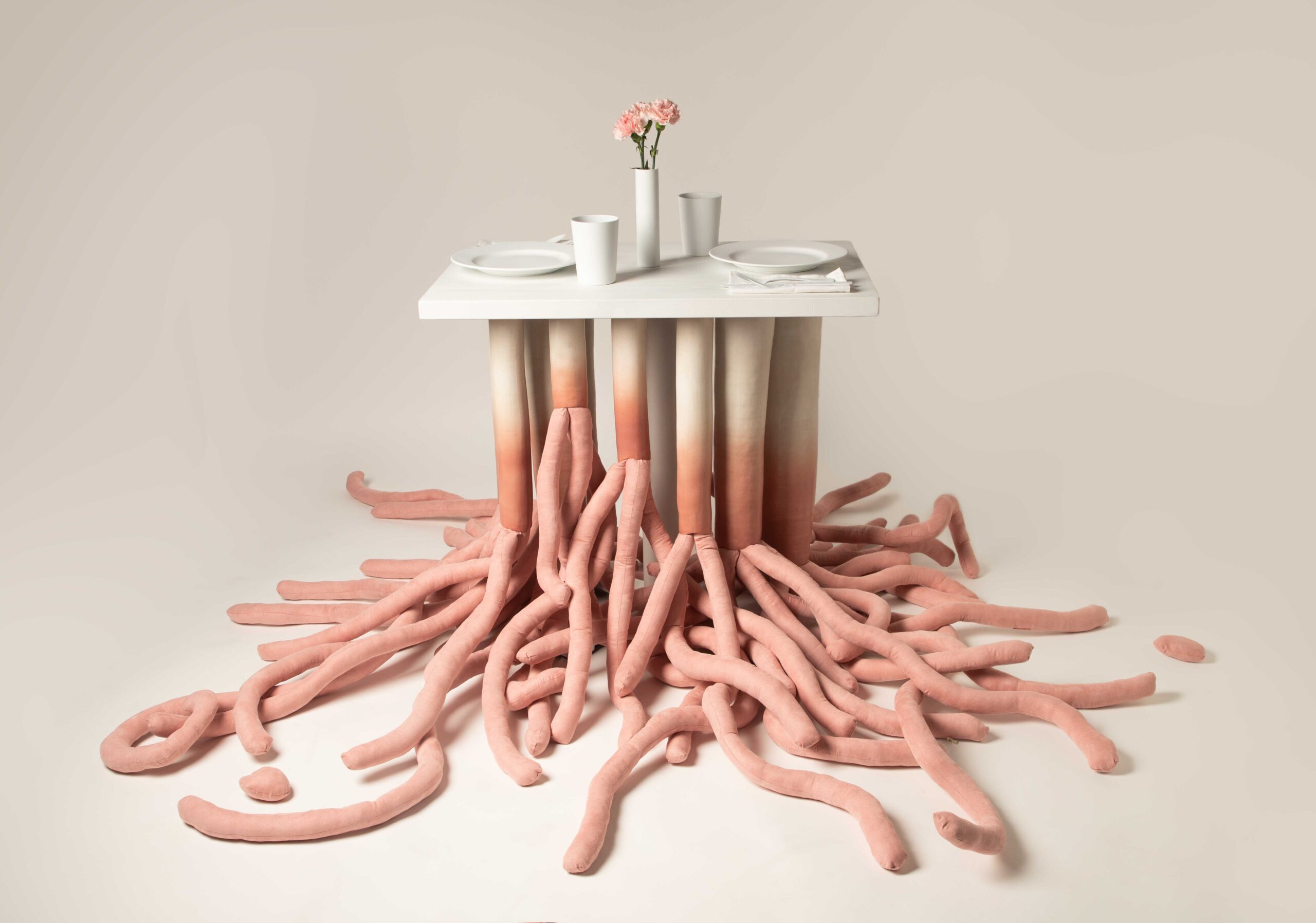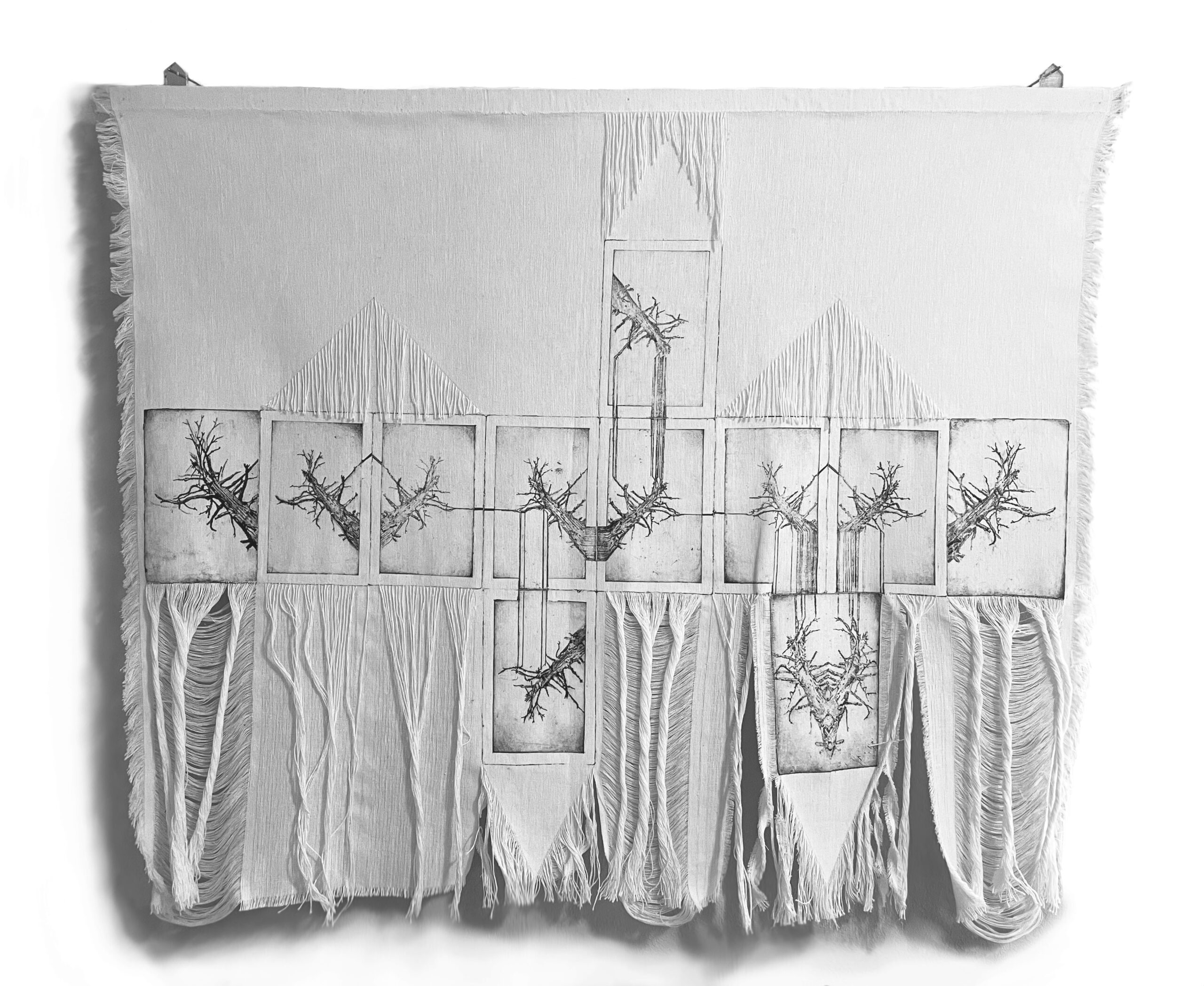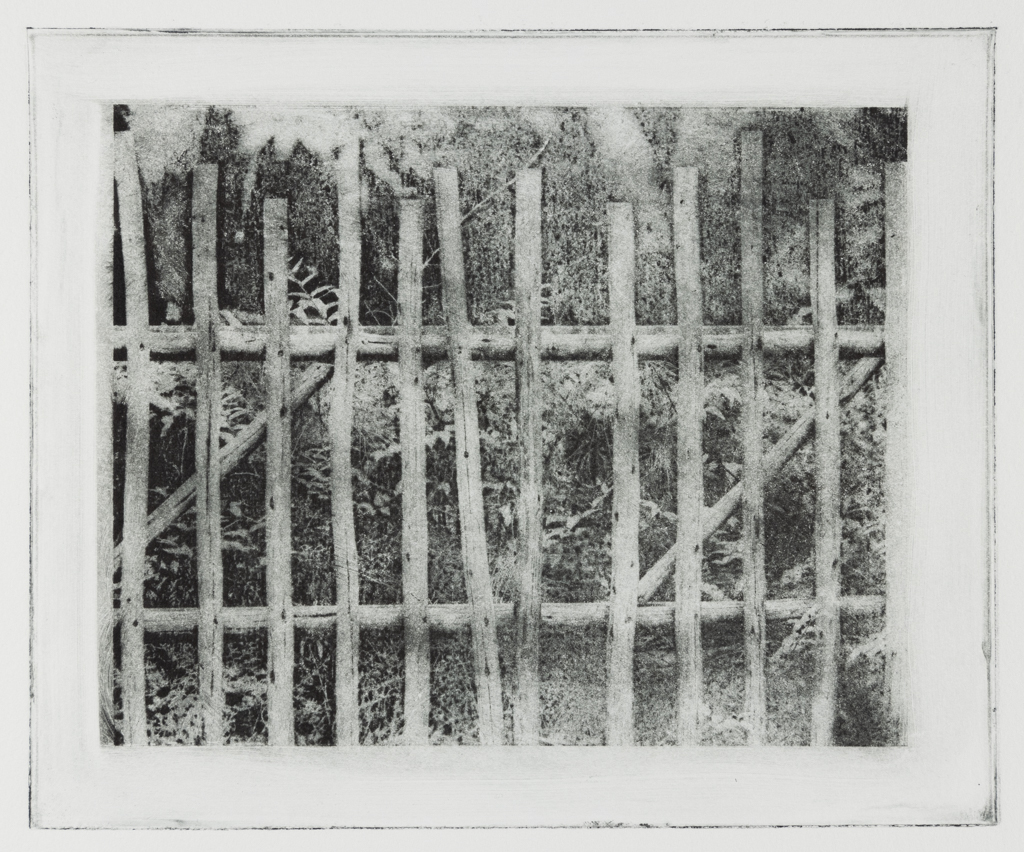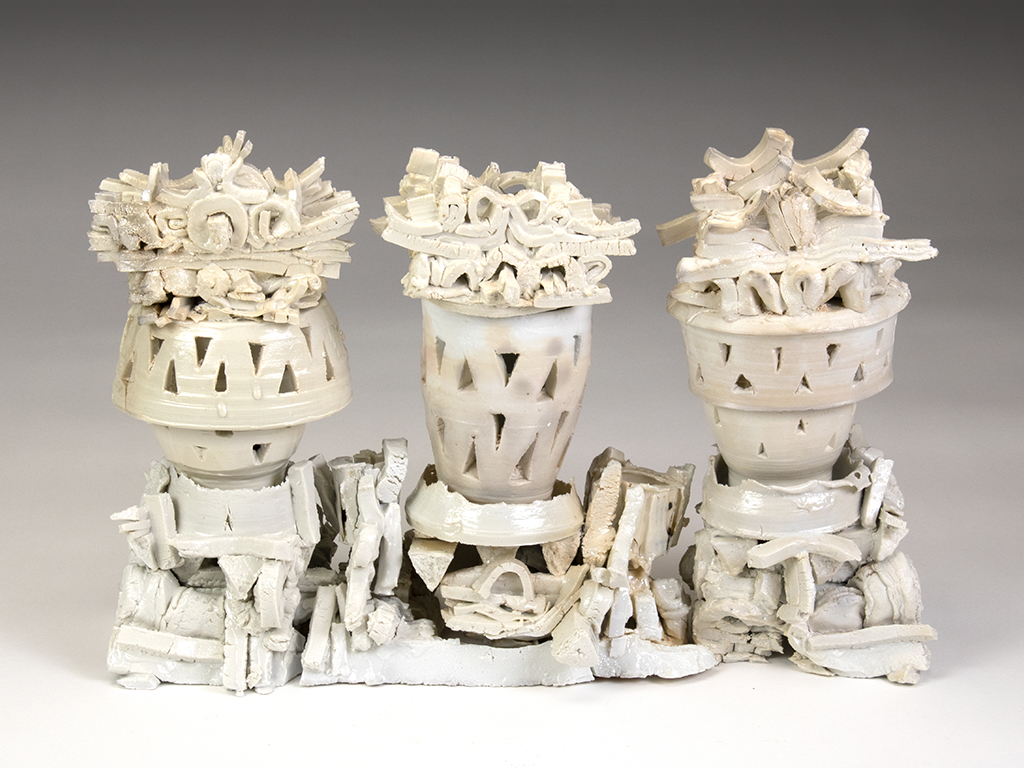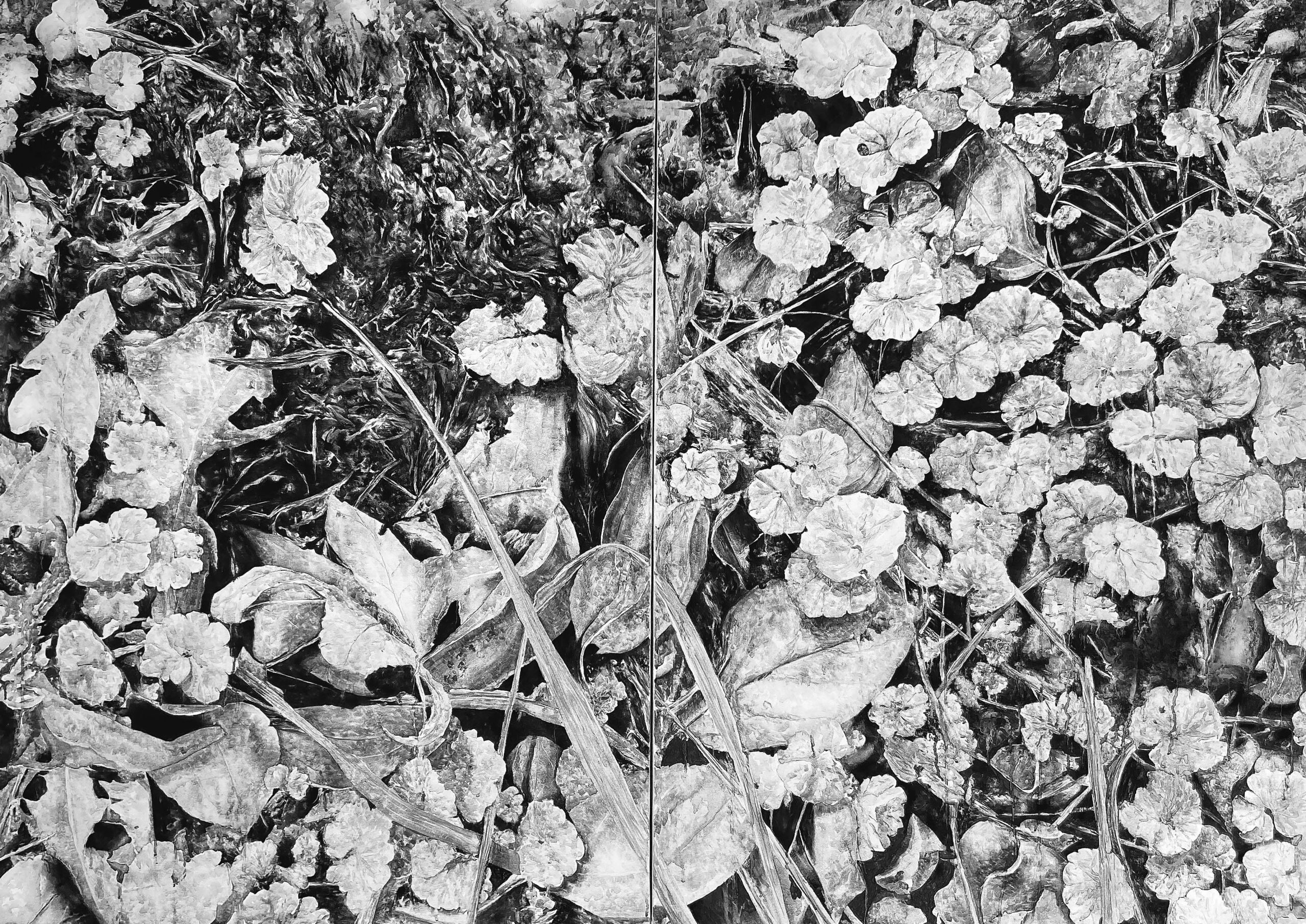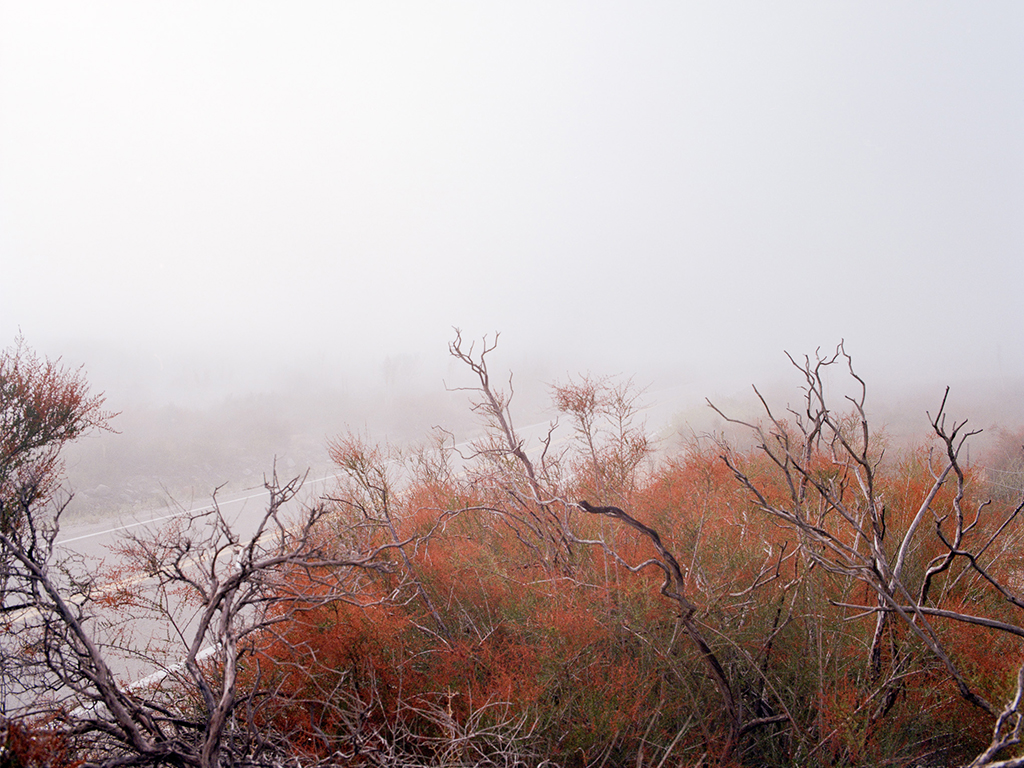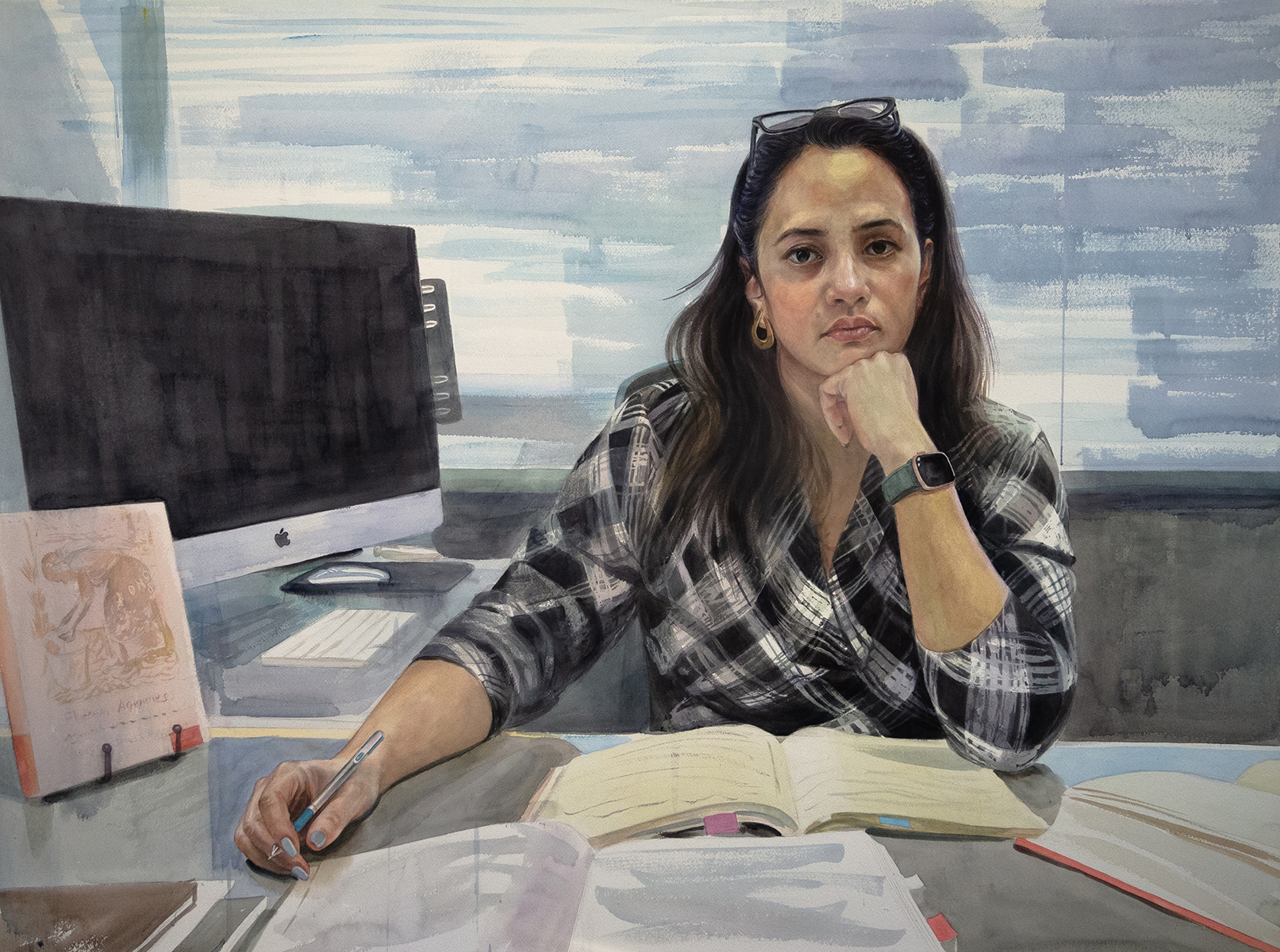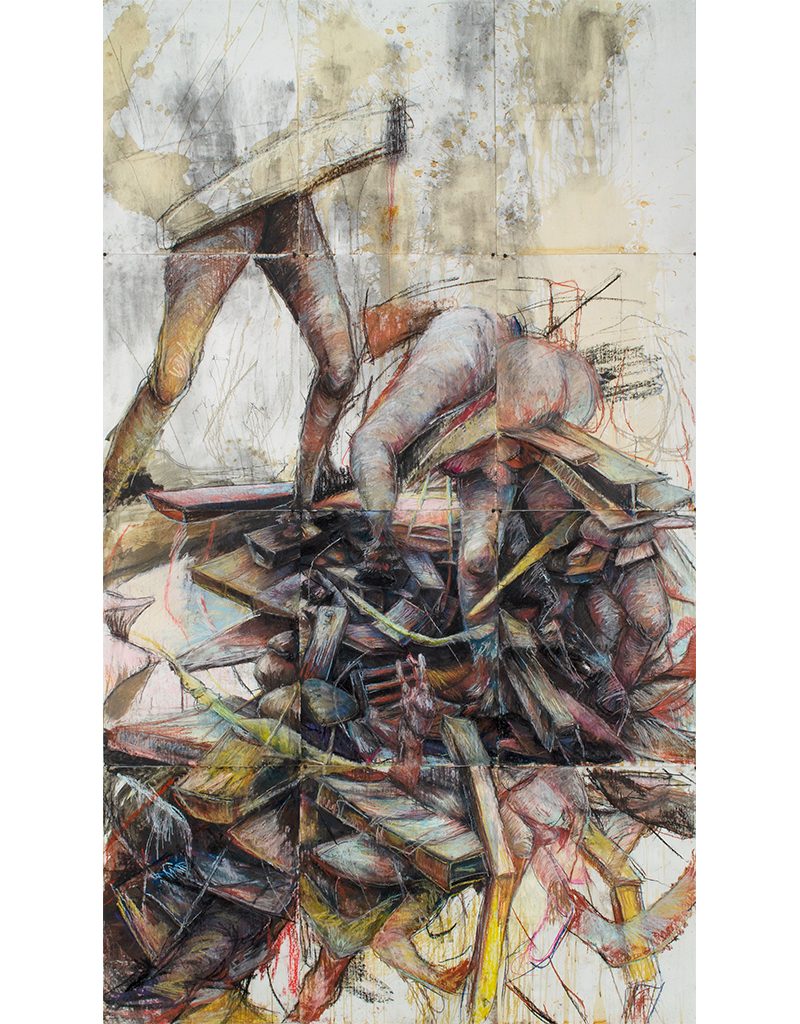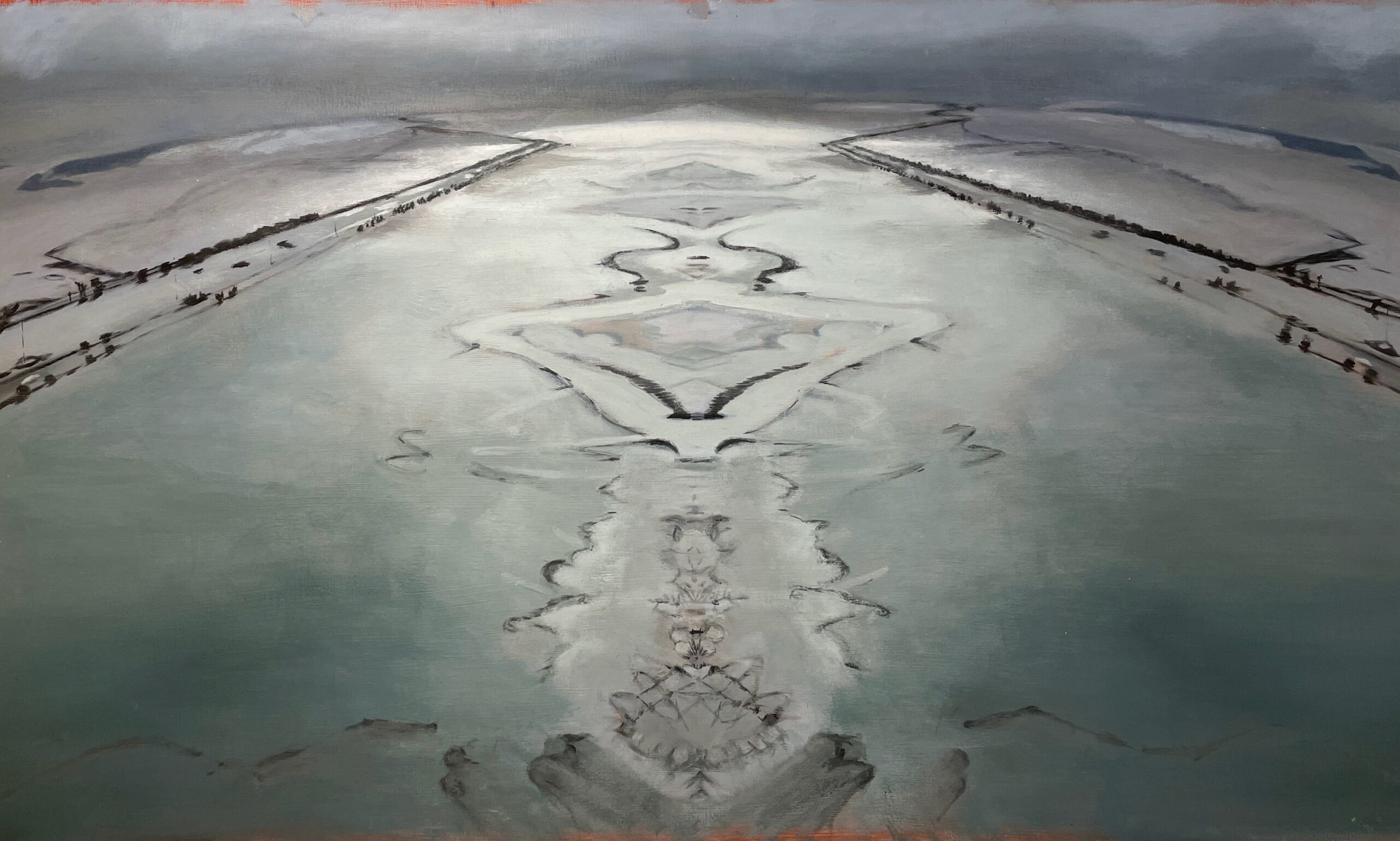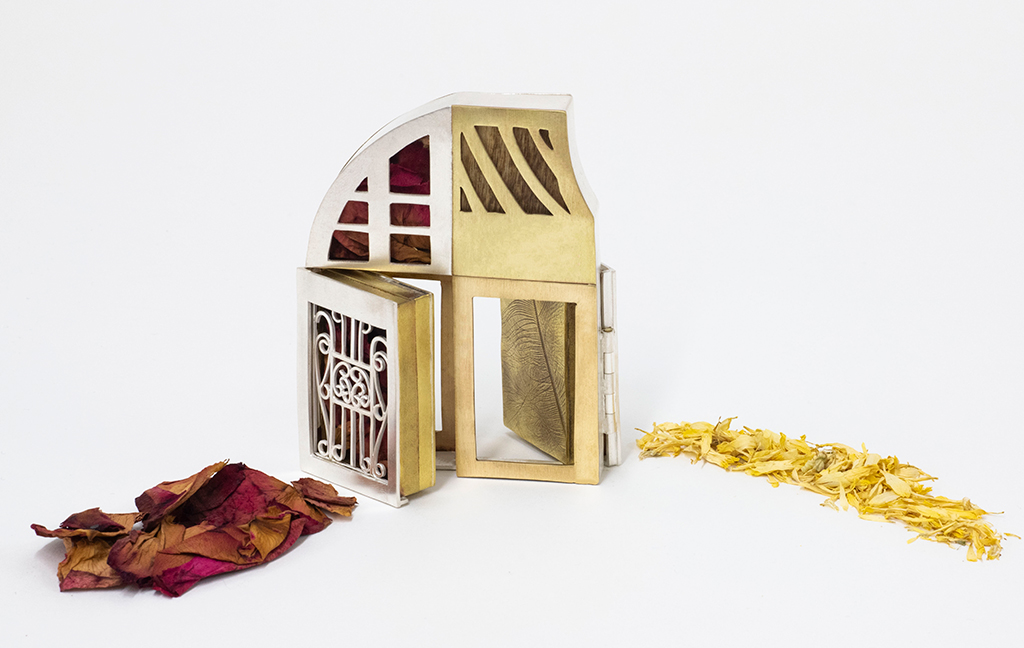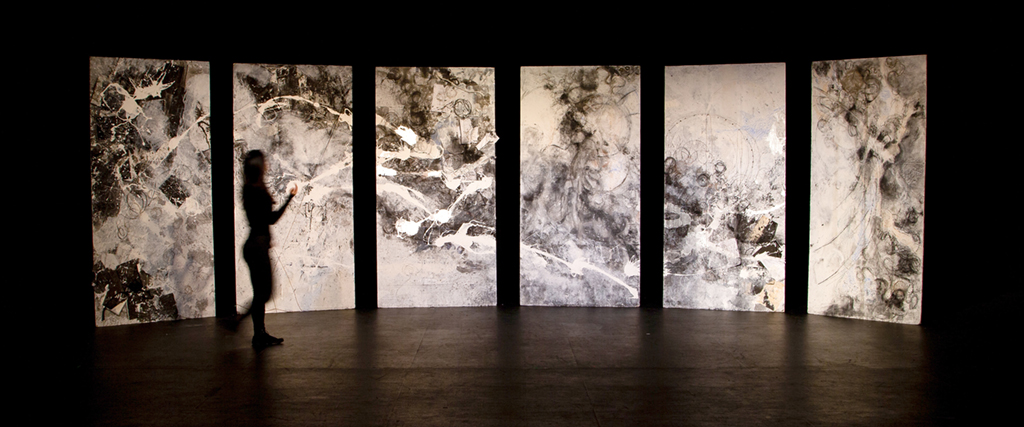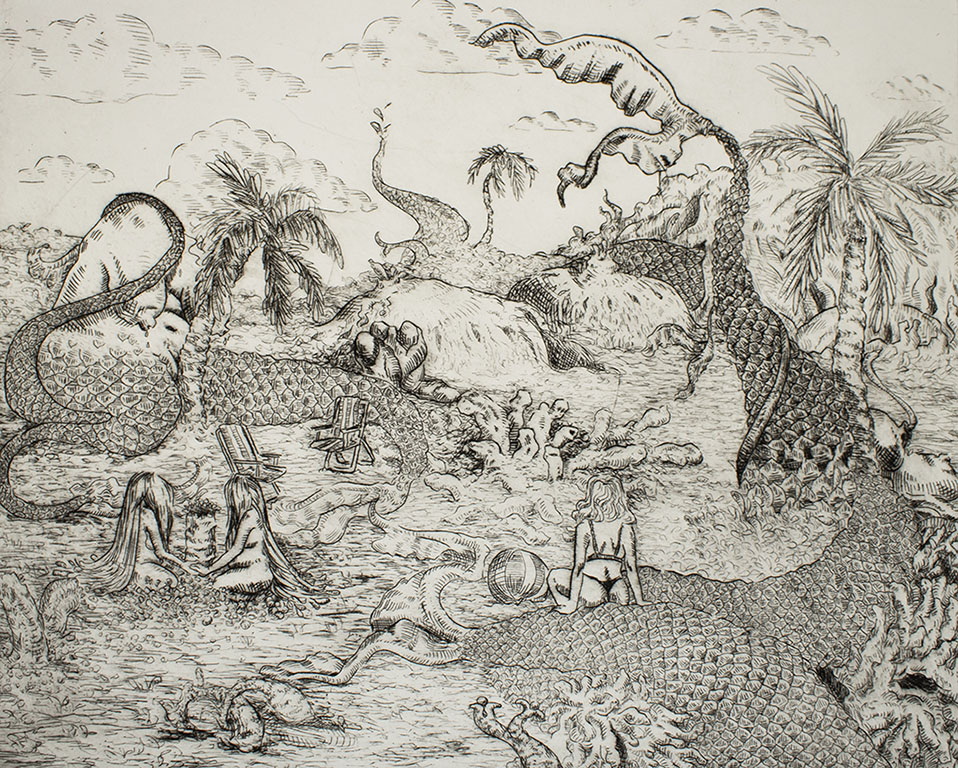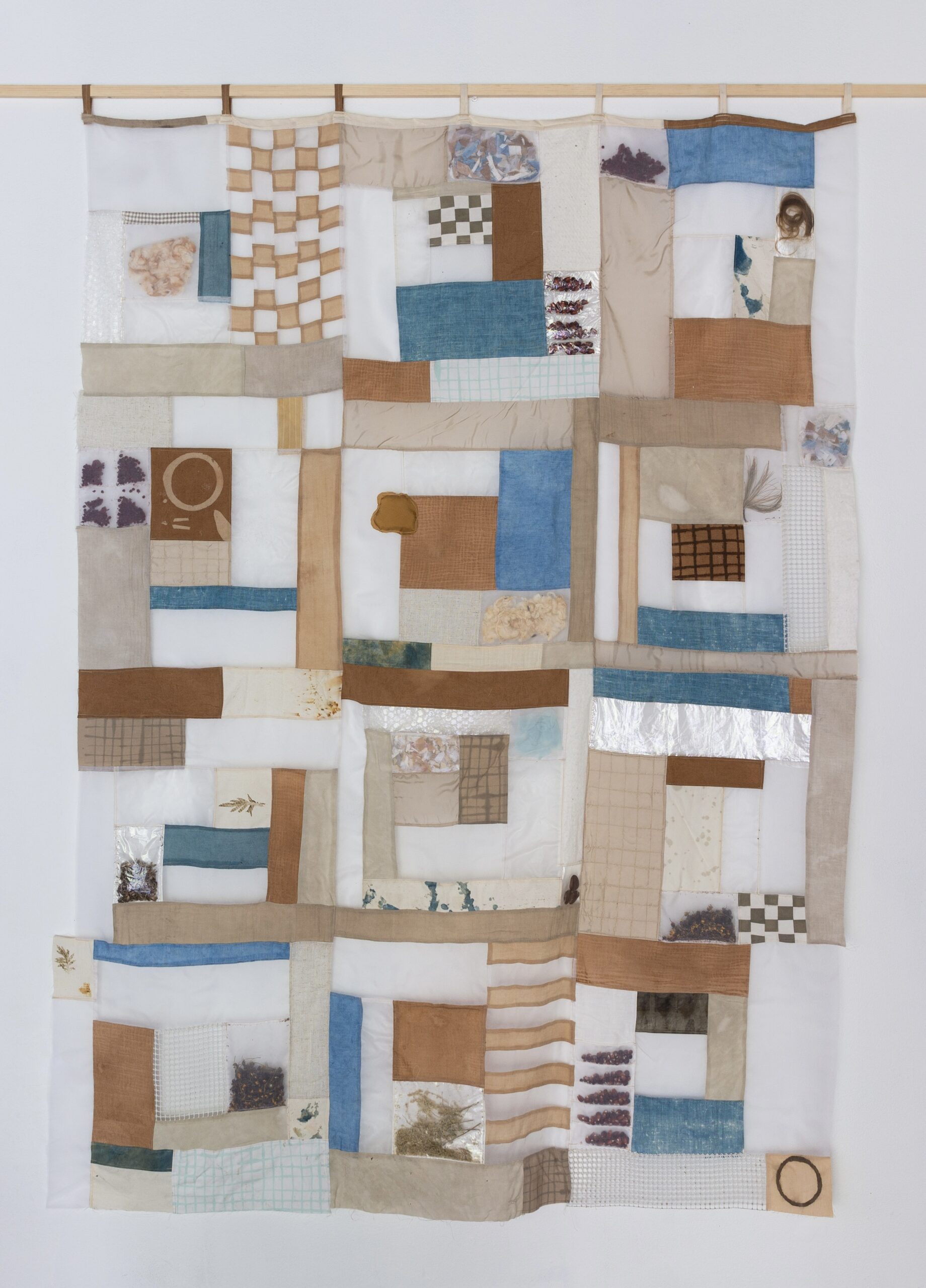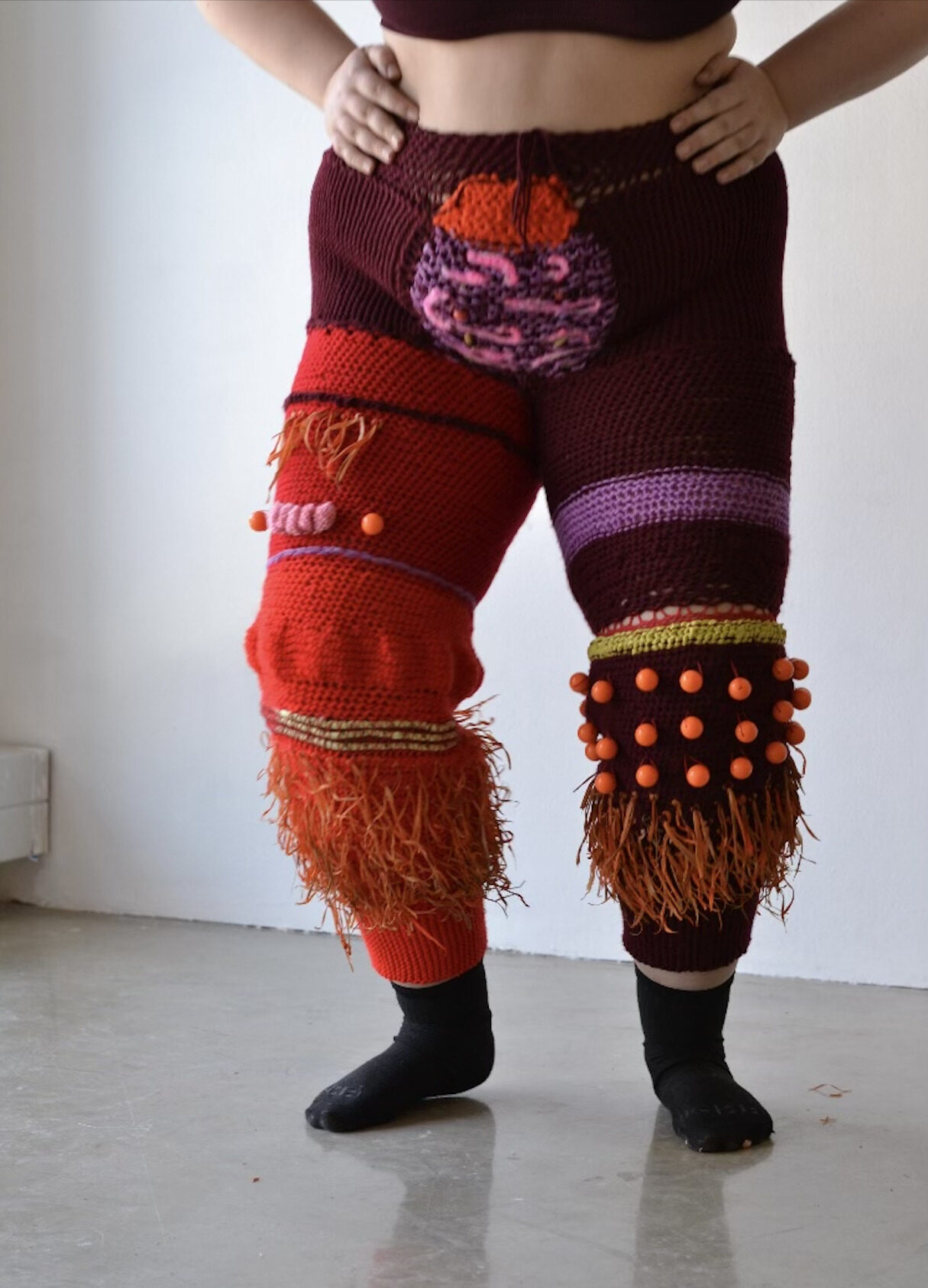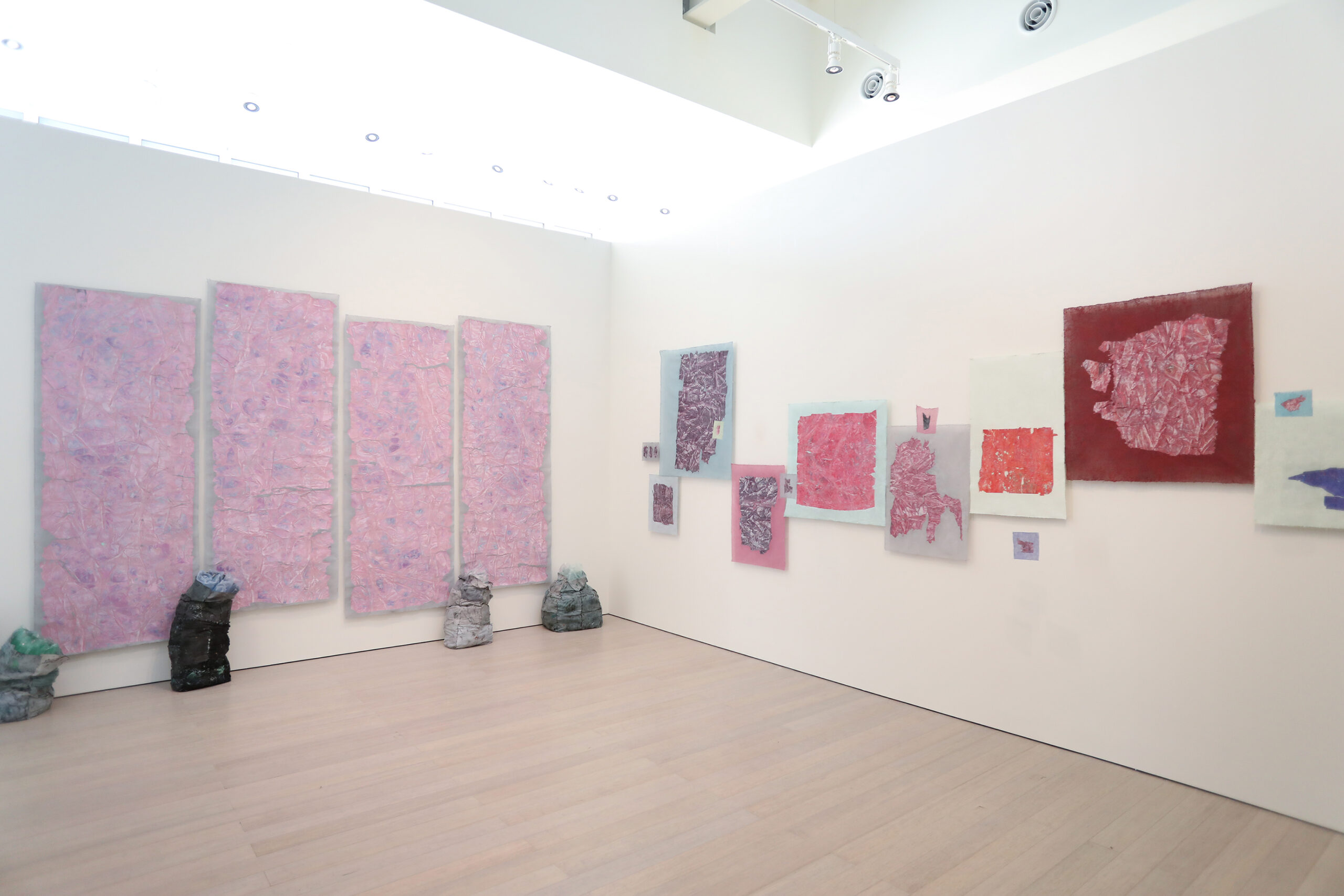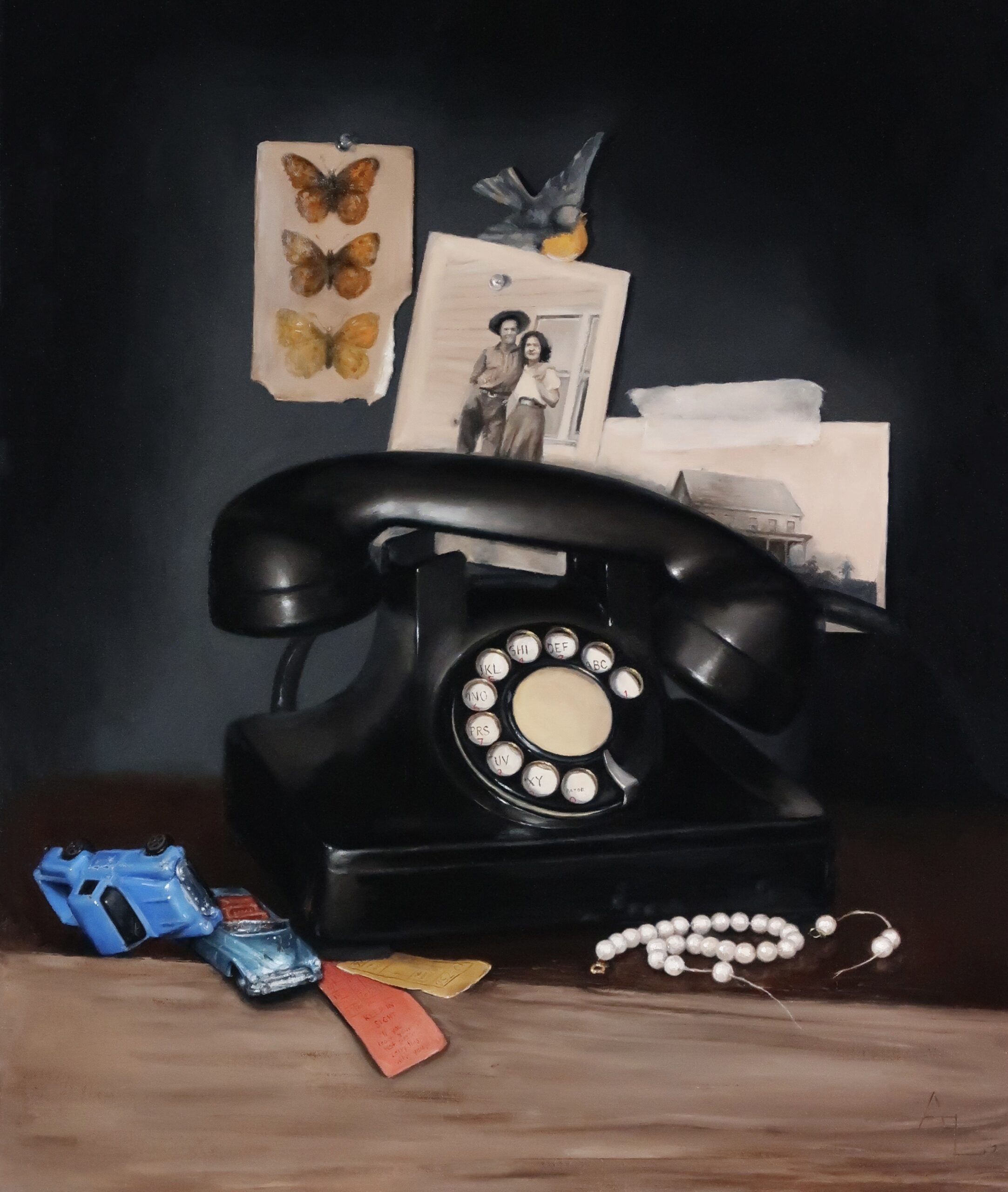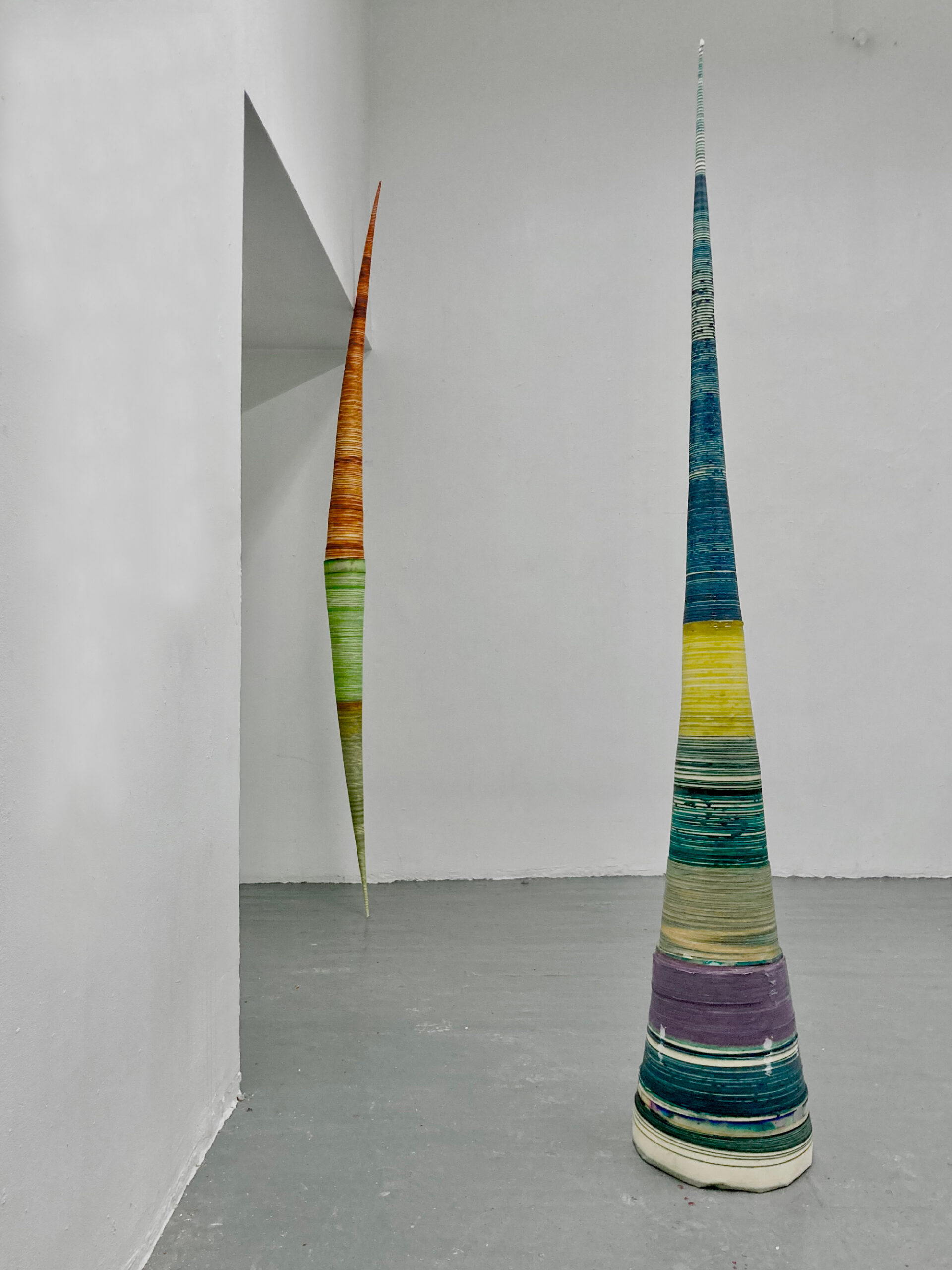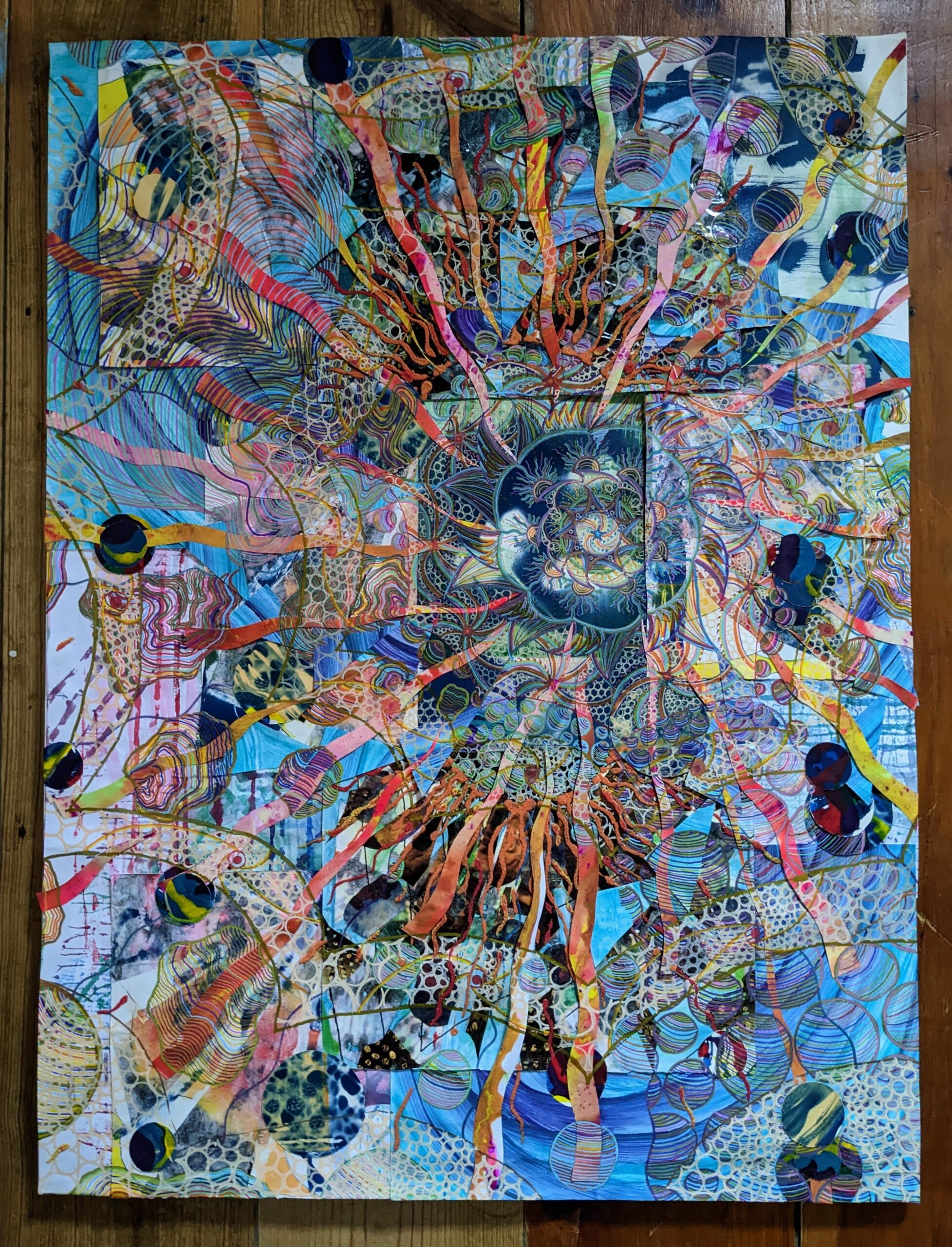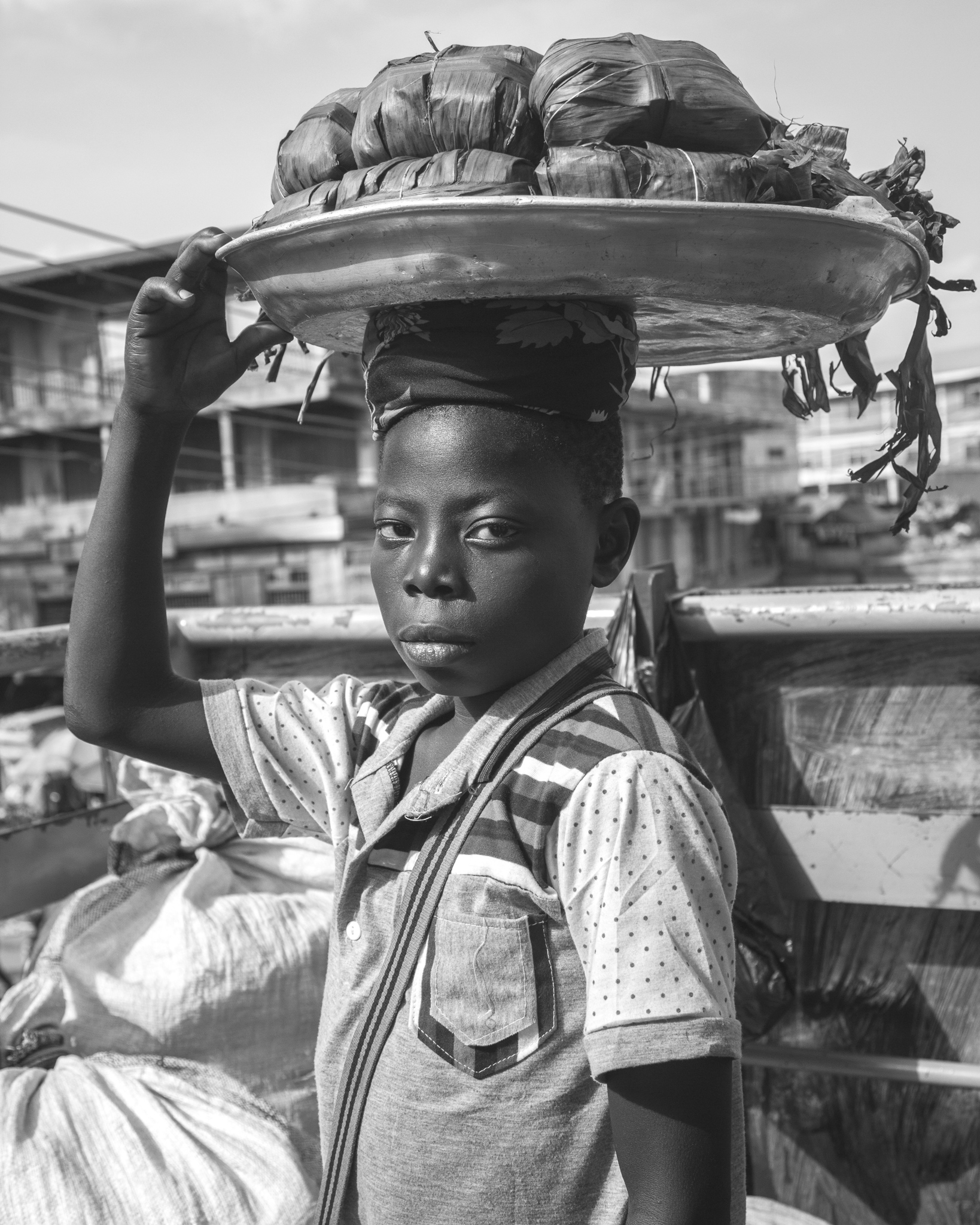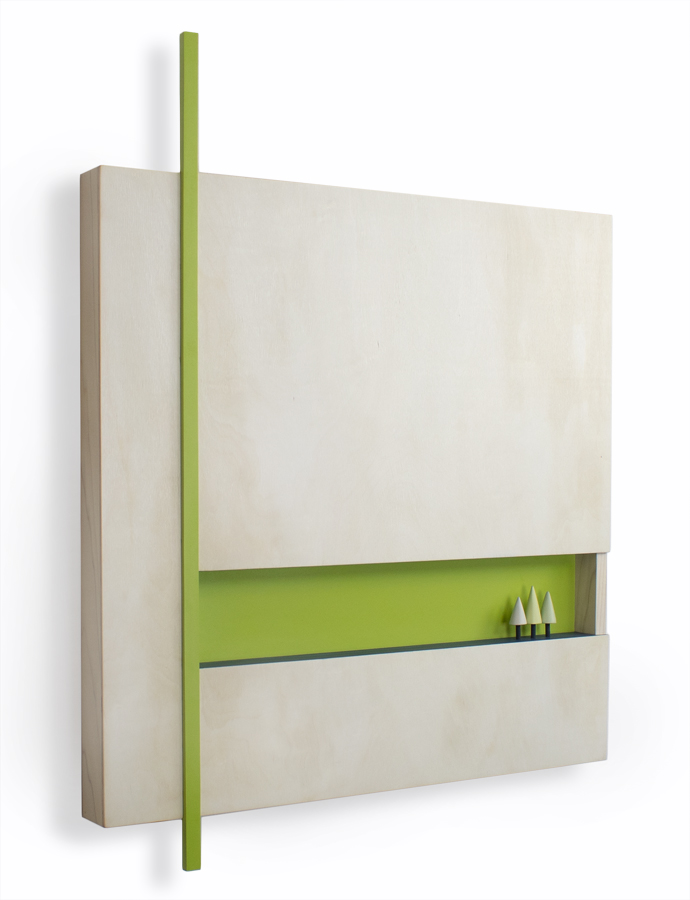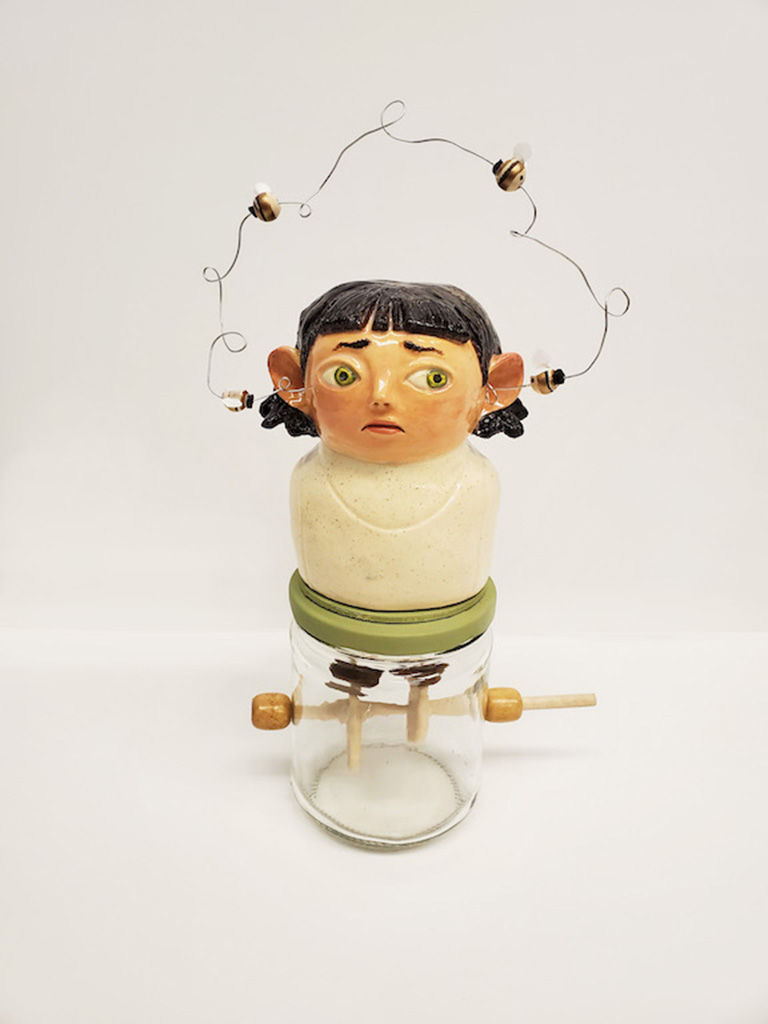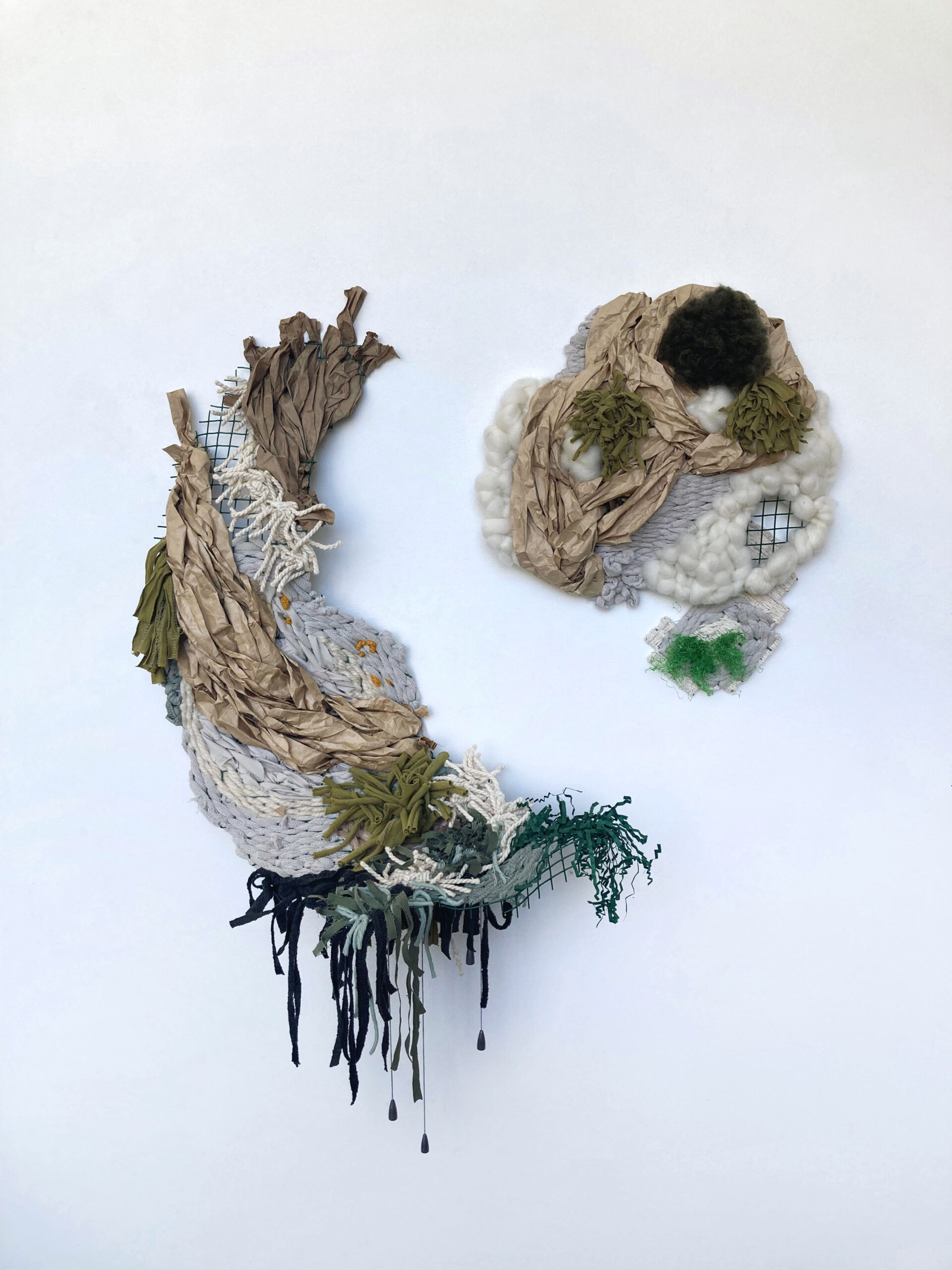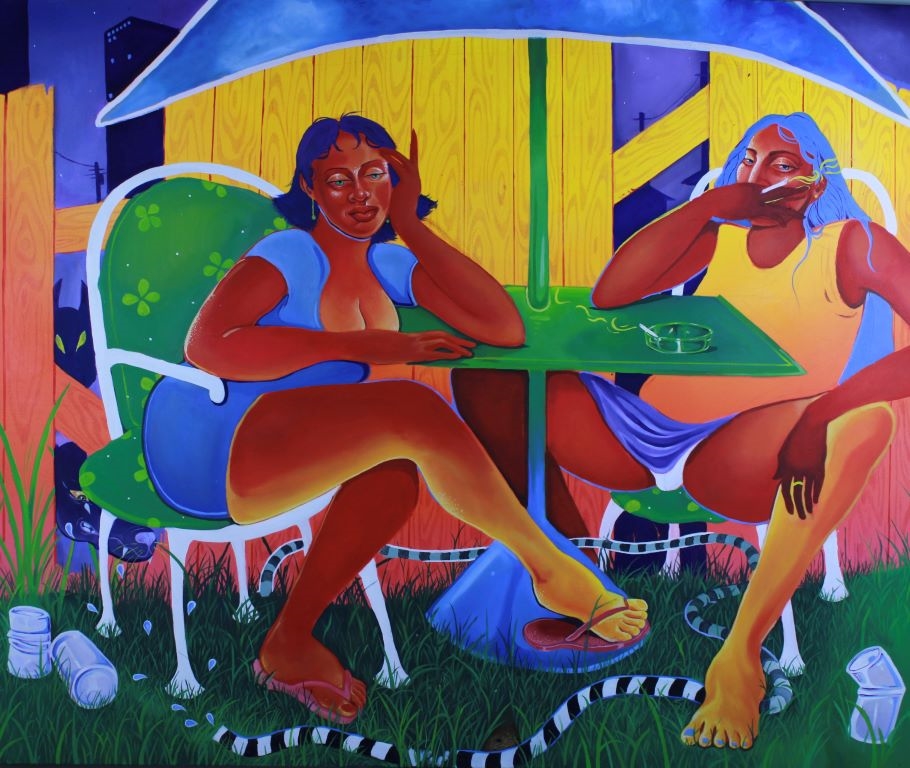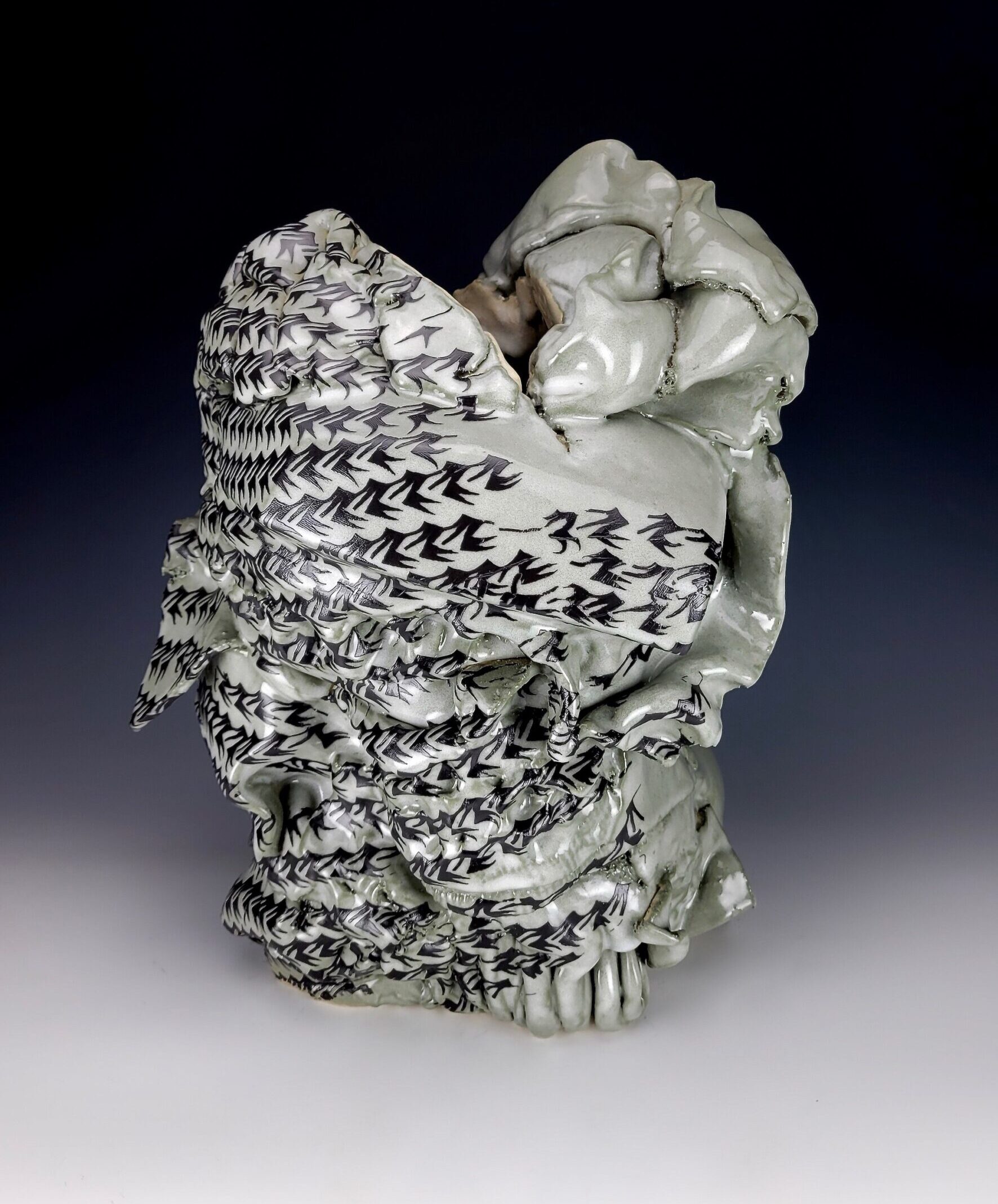Juror Statements
 Dagny Walton, MFA, the University of Montana
Dagny Walton, MFA, the University of Montana
Jurors Choice: The Man in the Mustard by Anthony Naimo
It was an absolute pleasure to see the breadth and diversity of work that graduate students from around the world submitted for this exhibition. The extent of students’ creativity, mediums, and themes, was very exciting to observe, and as jurors we were hard pressed to choose just 50 pieces to include in the final exhibition. In spite of everything, the production and evolution of art stops for nothing.
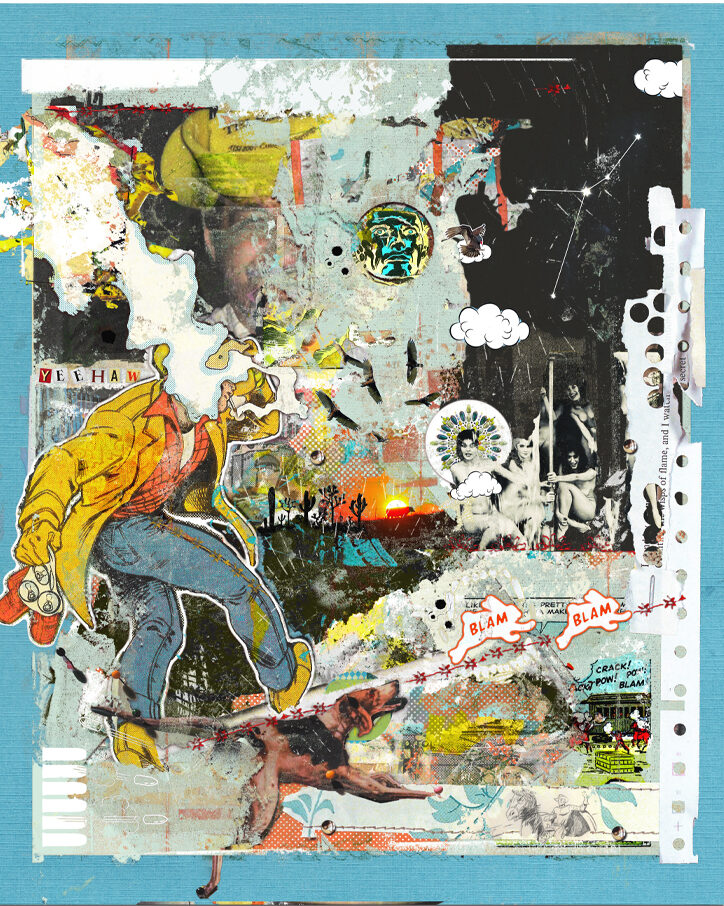
I chose “The Man in the Mustard” by Anthony Naimo for my juror’s choice award. The theme of this exhibition largely focused on ideas of place – an intentionally tricky concept to navigate in a world hurtling towards globalization and cultural homogenization. While my choice might be reductive or old-fashioned in this evolving global climate, I believe that regionalism still holds importance in our upbringings and our day-to-day lives. And as an artist that also works with the theme of the American West, I felt a kinship with Naimo’s work. Despite our never-ending march into new frontiers like virtual reality and artificial intelligence, I appreciated Naimo’s examination of frontiers long past, though still intimately, uncomfortably, familiar to our modern eyes.
www.dagnywalton.com
@dagr.goo
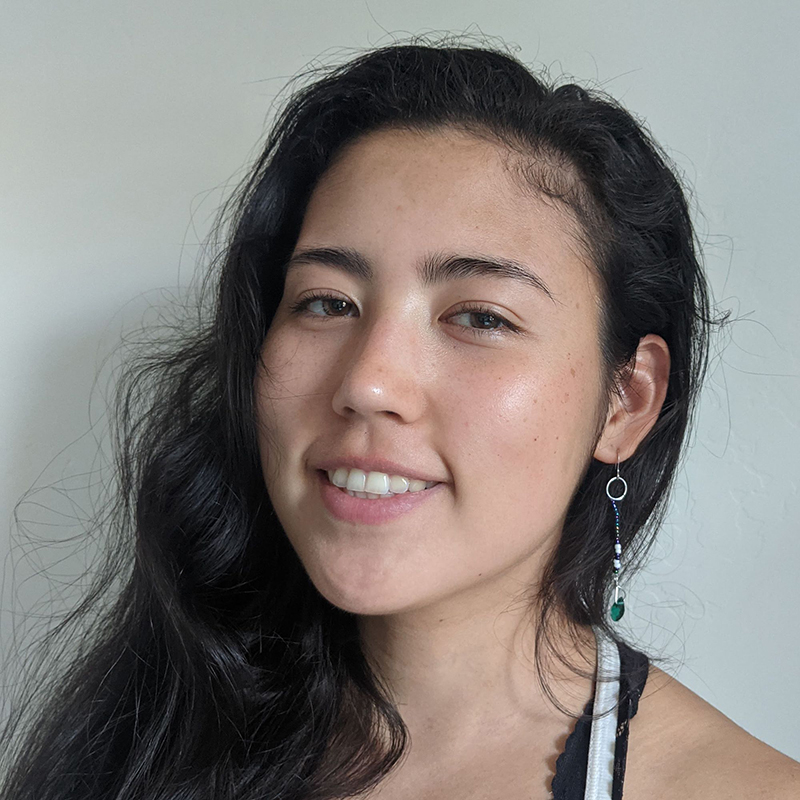 Shannon Webb, MFA, the University of Montana
Shannon Webb, MFA, the University of Montana
Jurors Choice: Shapeshifting by Delaney Shin
Thank you to everyone who submitted work to Here, There, and Nowhere. It was amazing to see the vast array of art being created by fellow grad students and a privilege to be a juror for the show. My favorite part of this experience was witnessing the other jurors making a case in favor of an entry. I loved it when someone would get excited and show their support for a particular piece. Sometimes the tide would be swayed, but in the end many favorites were lost. Overall, it pleased me to see how much care went into the entries, the jurying, and the cultivation of the annual MFA Exhibition Online.
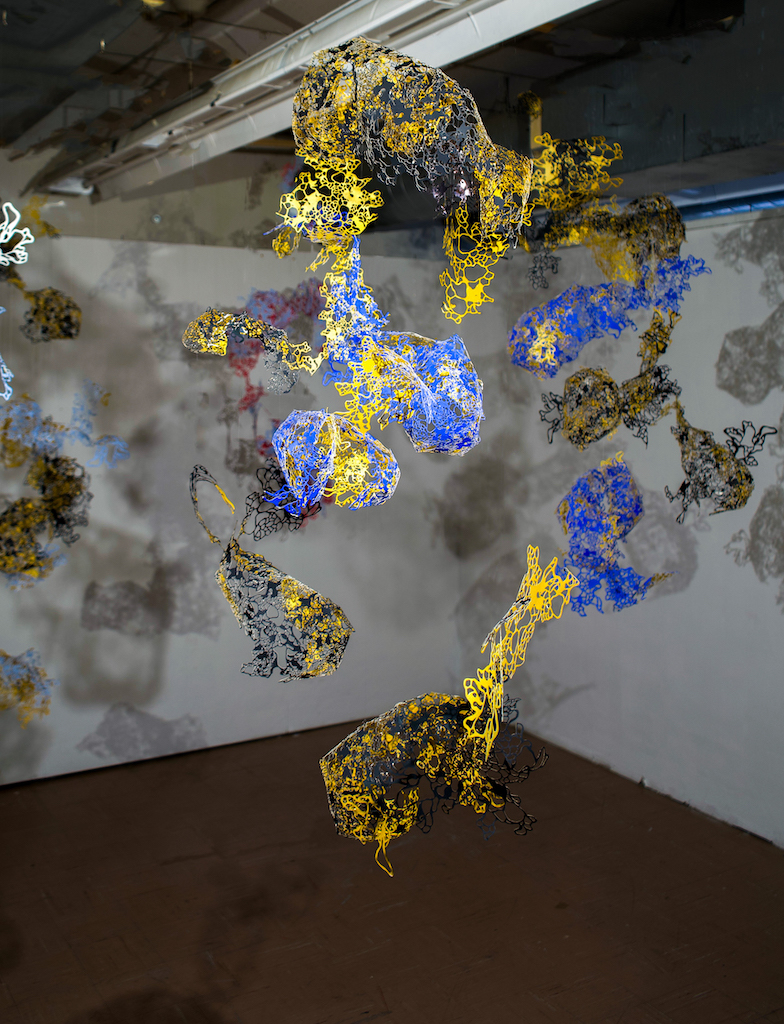
My juror’s choice goes to Shapeshifting by Delaney Shin. I’m captivated by the amorphous structure and how it extends beyond the physical through light and shadow. The patterning is reminiscent of plant cells or weathering rock which I conceptualize as an ever cycling process of creation, destruction, and renewal. Shin’s accompanying text was significant in my decision. I found the core of her work to be deeply personal and her intentions beautiful.
www.shannon-webb.com
@shannon.owo
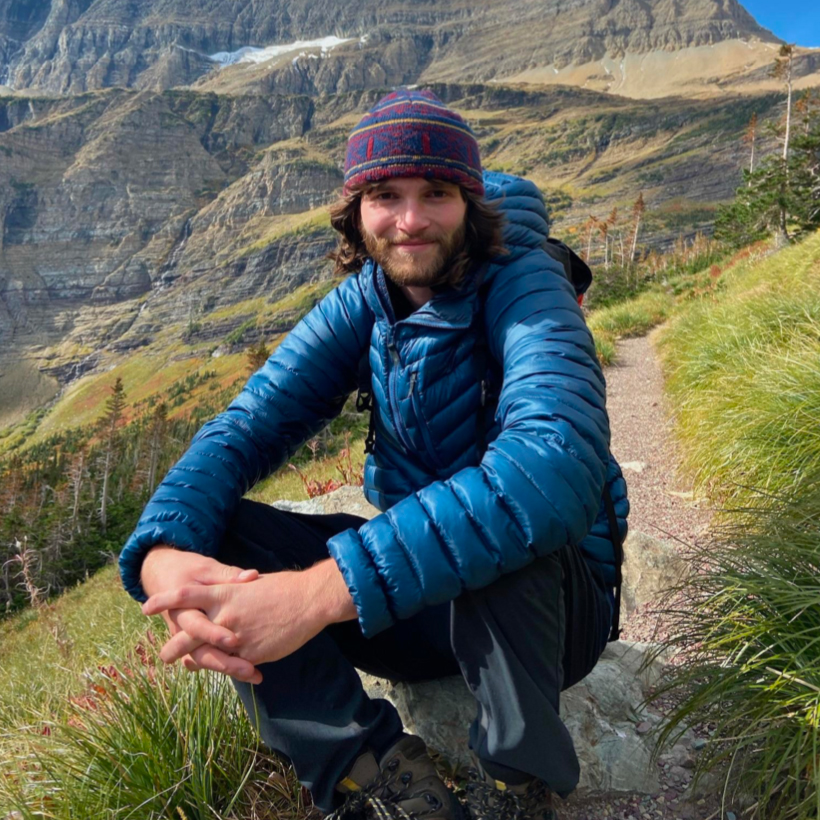
Drake Gerber, MFA, University of Montana
Jurors Choice: Carry Home by Kristen Taylor
I chose “Carrying Home” by Kristen Taylor for my juror’s choice award. I resonated with this piece the moment I saw it because of the strong connection between artist and landscape. Taylor’s piece makes me think about the action of someone putting this shirt on, going out into the landscape and filling the pockets with dirt and native prairie seeds.
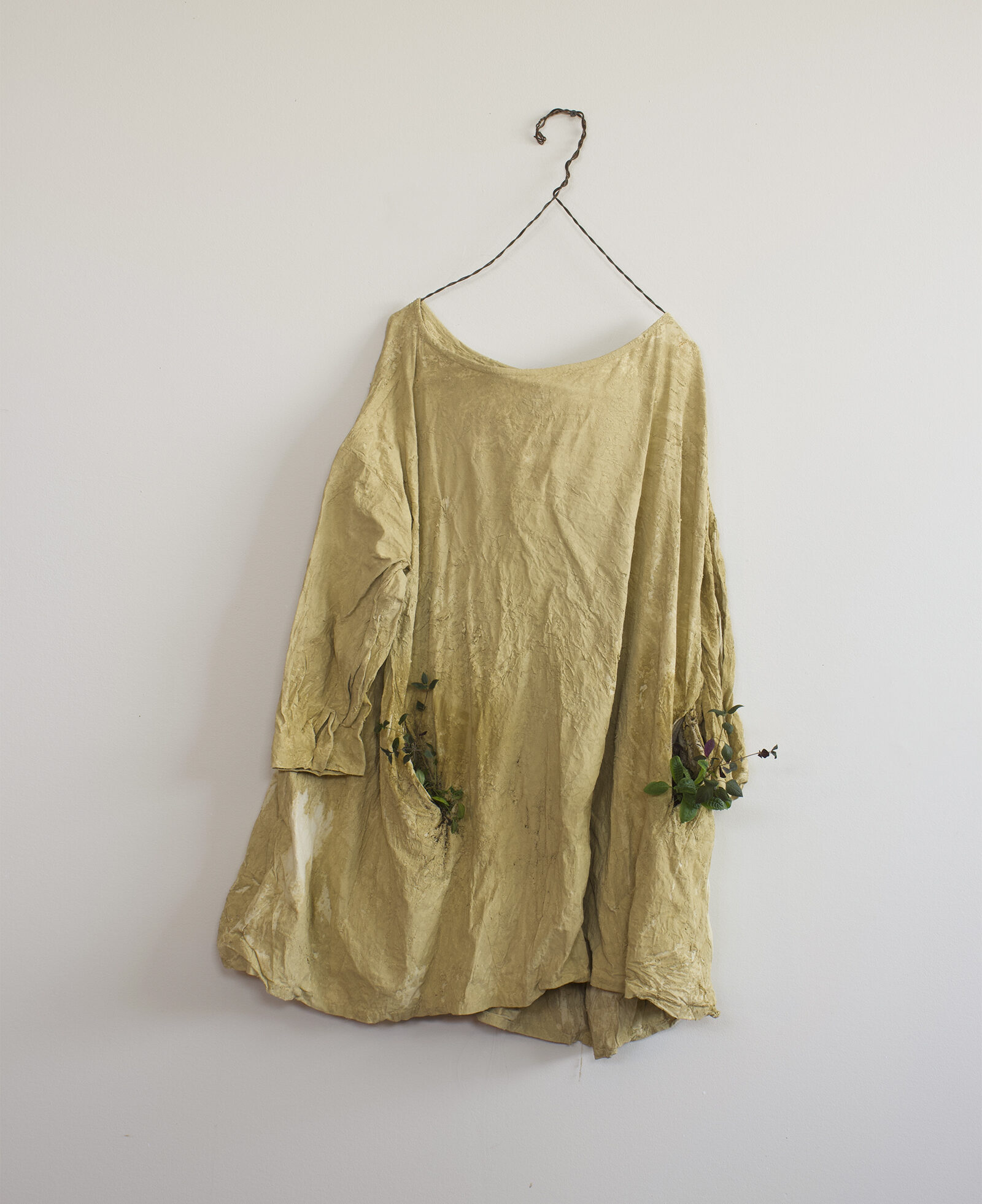
I love the idea of the artist leaving the studio, interacting with the landscape, and coming back to the studio with a finished piece. The dedication to this piece is inspiring, as we the viewer don’t know how long it took for those seeds to grow into the grass we see in the finished piece. “Carrying Home” makes me think about habitat restoration, human constructs of wilderness, and awareness of landscape.
@drakegerber
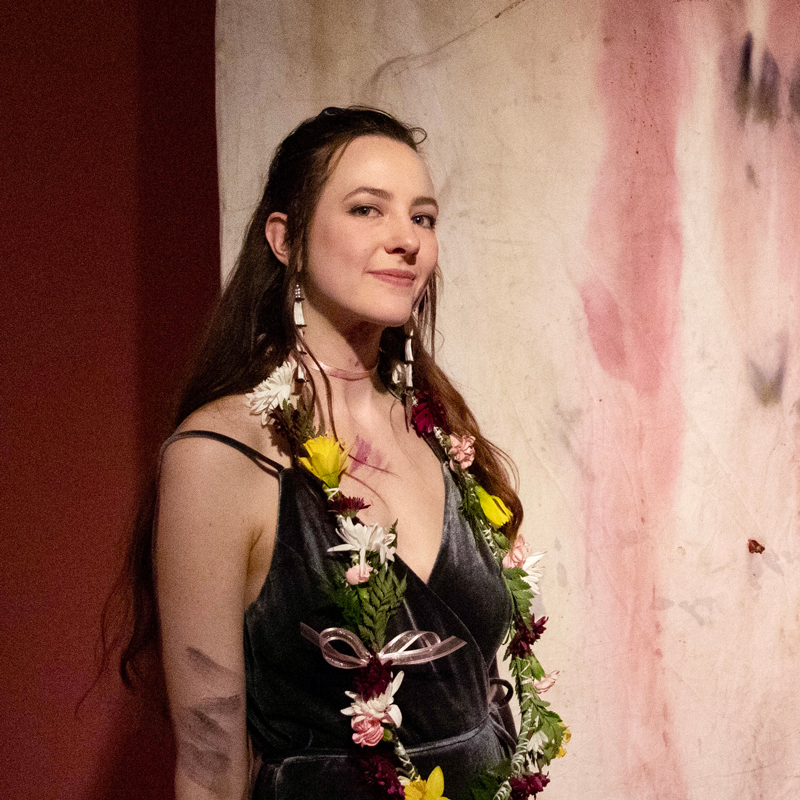 Erica Hitzman, MFA the University of Montana
Erica Hitzman, MFA the University of Montana
Jurors Choice: My Pretty Woman is a Real Handsome Man by Wes Weisbaum and Nicky Wanamaker
I have thoroughly enjoyed the opportunity to see such a vast display of the work being made by my peers across the globe. There were over 800 unique works of art to consider making narrowing the final exhibition down to just 50 works a remarkably difficult challenge. Thanks to the patience and dedication of the graduate students of both The University of Montana and Montana State University, we were able to create an amazing exhibition.

My juror’s choice is ‘My Pretty Woman is a Real Handsome Man’ by Wes Weisbaum and Nicky Wanamaker. I was instantly captivated by both the colorful imagery and original audio. I felt a personal connection to the story told through the spoken word, especially against a visual backdrop of late nineties and early two thousands youth culture. The video pulled me into a time and place I did not realize was so iconic in my own coming of age and self-discovery and told a story I’m sure many others can connect to.
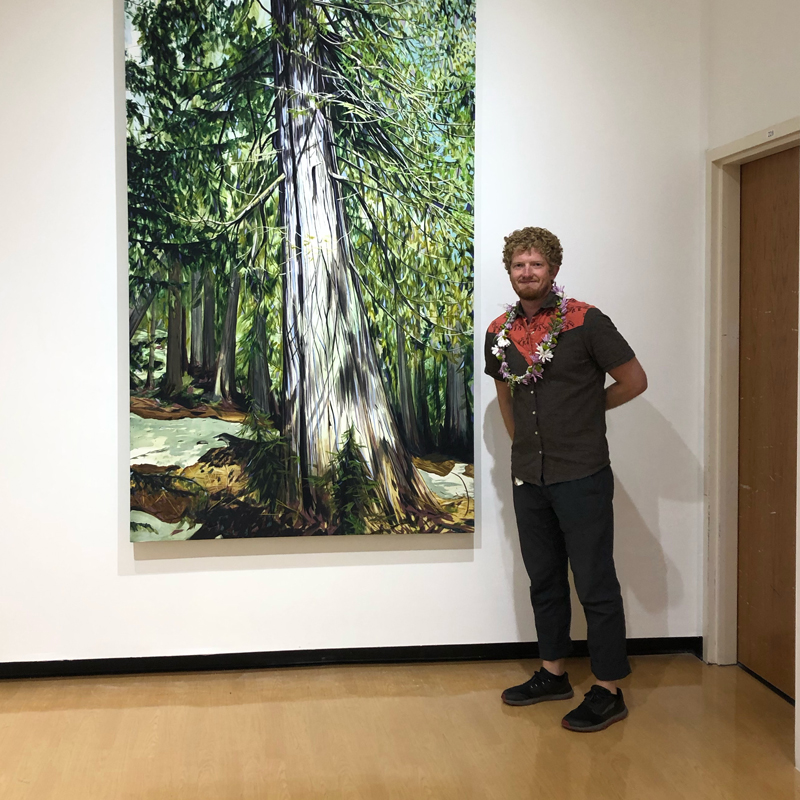 Eric Jensen, MFA the University of Montana
Eric Jensen, MFA the University of Montana
Jurors Choice: Now Persian Garden by Mahtab Mohammad
Mahtab Mohammadi’s piece Now Persian Garden immediately struck me with its diverse color contrasts and lyrical botanical structures. It contains a rich complexity of mark making and built-up layers. I follow the movement of the red-orange marks and the pastel shapes flicker in my eye as I ponder the meaning of the blue background. This painting reaches right towards me and keeps me looking, searching. I know the majority of what I can see, I know those forms, however there is something about the blue background, something about the slight asymmetry of the composition, that makes me think that this is about a time that has passed. Many paintings are containers for memory, this piece is functioning in that way, yet it feels more like a memory that was chosen because the rest of them were too painful. It feels like if the scene moved to the left or right, we would be beholden to some kind of terrible violence. From reading Mahtab’s statement I know that this is certainly the case, that this pleasurable image is intended to evoke a complexly tragic relationship with place and the history of Iran. I think that she did an incredible job capturing an essence of that history in such a stunning and magical piece.
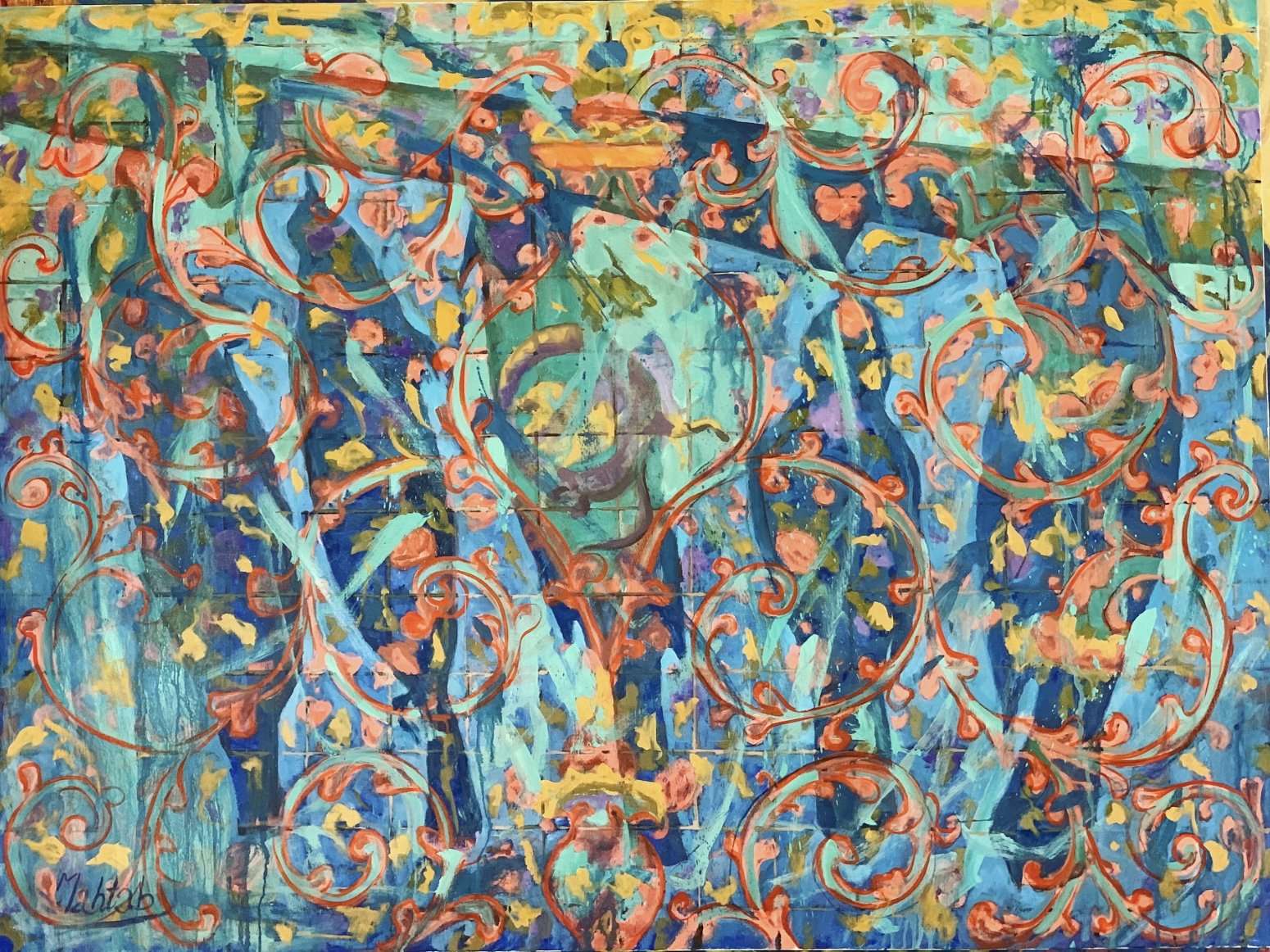
www.ericjensenpaintings.com
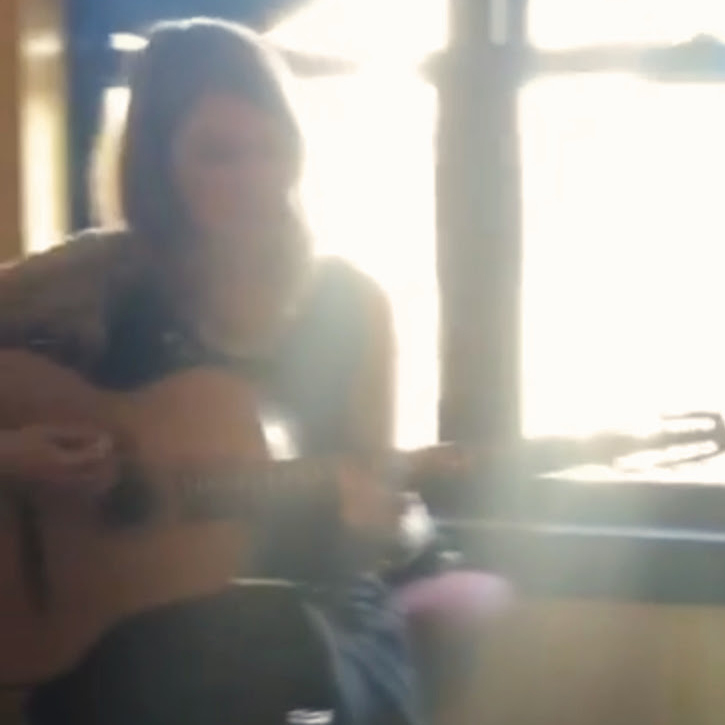 Juror’s Statement, Melanie Moralez, MFA Montana State University
Juror’s Statement, Melanie Moralez, MFA Montana State University
Jurors Choice: Telephone Game by Quincey Miracle
I’m humbly grateful to have had the opportunity to jury with fellow art graduate students from Montana State University and The University of Montana for this exhibition: “Here, There, and Nowhere”. The intense process of looking through over 850 international submissions, most with correlating artist statements to absorb, was a unique privilege that felt both surreal and transformative.
Visual art is such a poetic form of storytelling that can reach beyond words. My initial approach as juror was to make a 1st pass of all the entries; images-only, without reading statements, and then to review with a 2nd pass that would include any given texts. However, upon sampling just a few of the first artist’s supplemental writings and experiencing the tremendous impact of gaining that extra insight into aspects like theme, background, and process, I quickly changed my approach. Connecting the artist’s words with their images became a more significant factor than I imagined throughout the process.
This exhibition captures a snapshot of the wide array of mediums used in our contemporary art culture, as well as some of the most prevalent themes most alive today, across the globe. As all of the jurors are coming from varying medium-focuses, backgrounds, biases, and tastes, it was of course extremely challenging to reach a narrowed pool for the exhibition and, especially, to make our ultimate decisions on awards. It was encouraging for me, as an artist myself, to witness the care that went into deliberation and I was inspired by the passionate conversations built around varying opinions. As I saw a massive number of highly skilled and impressive art works get side-lined, I learned first-hand that applicants to competitions such as these should never let any experiences of “rejection” hold them back. We, as artists, should always stay true to our own visions… and simply keep creating and getting our work out there!
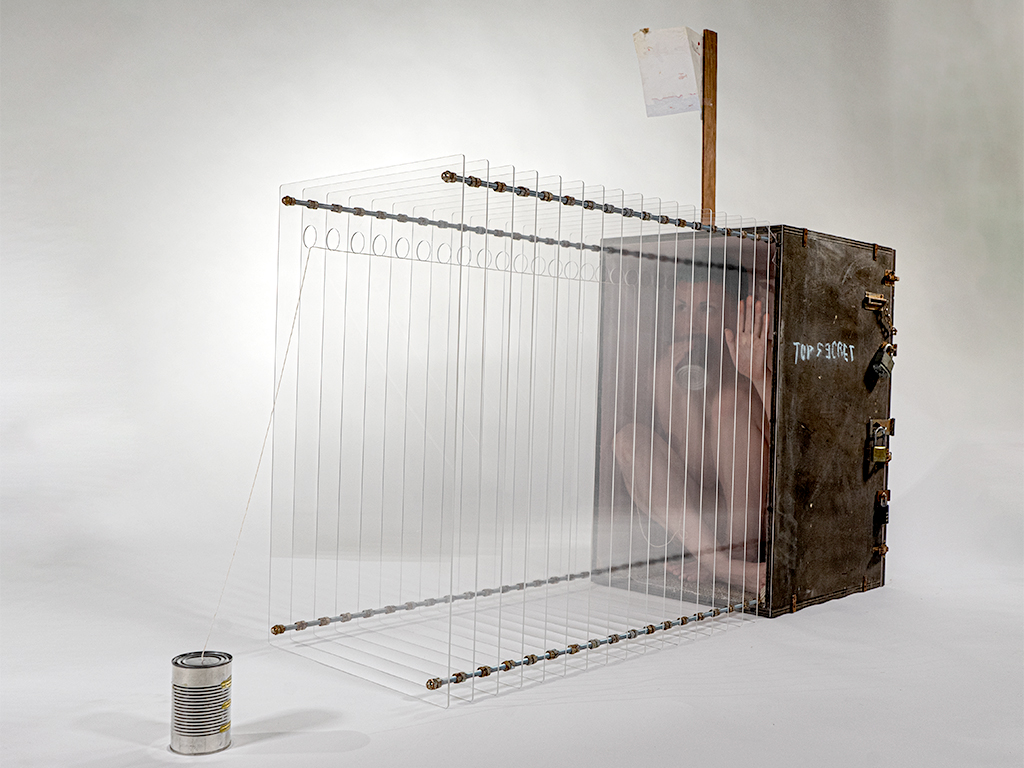
In Quincey Miracle’s mixed media performance piece entitled “Telephone Game”, they spend hours at a time, tightly crammed inside a locked-box sculpture while offering “stories and memories with participants who choose to communicate” through obscured elements such as 17 spaced walls of plexiglass which allow for a small tunnel through which a string connects two tin cans.
It’s easy to recognize that an acute, personal, narrative is both subtly alluded-to and verbally delivered in Miracle’s performance, and yet, this piece generously allows for many other intriguing interpretations, as well. One of its charms is that it effectively speaks on many levels. Beyond the clear, strong, and balanced visual of both constructed-assemblage/sculpture and final photo image, I appreciate the performative dedication involved to activate “Telephone Game”. As a queer artist with a vocal disorder, interested in both sound expression as well as the inherent artist-viewer relationship (which leans so precariously on fractured layers of perception), I personally found several entry points into this particular work. It’s both powerful and emotionally vulnerable.
This piece successfully encapsulates many of the artist’s explorations, such as “referencing the body…to draw upon obscure childhood memories that are steeped in an unhealthy reverence for nostalgia”, as well as the subjects of “mental illness, childhood poverty, suppressed queerness, and negativity stemming from idyllic notions of perfection.”
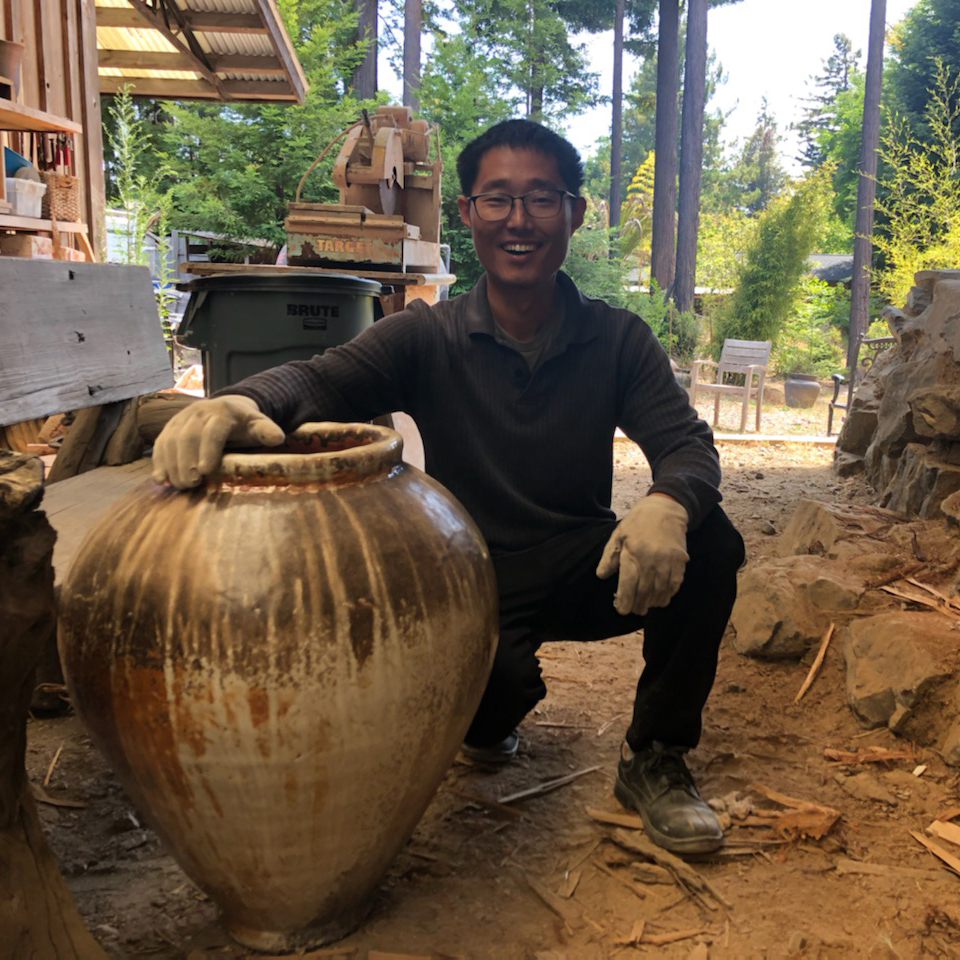
Myung Ahn, MFA Montana State University
Jurors Choice: Inner Demons by Jess Sallay-Carrington
Reasoning With the Inner Demons by Jess Sallay-Carrington has a visual interest that provokes curiosity from the audience. The content or context behind the work can shine through much better when the work has a strong visual presence with its size, presentation, and technical skills as shown in Jess’s work. I chose Reasoning With the Inner Demons partially because I understand the challenges of making convincing figurative work with clay. Various emotions each figure expresses look convincing, and I love the attention to details shown on the teeth! Choosing not to glaze the work comes across as confidence in their forms and texture.
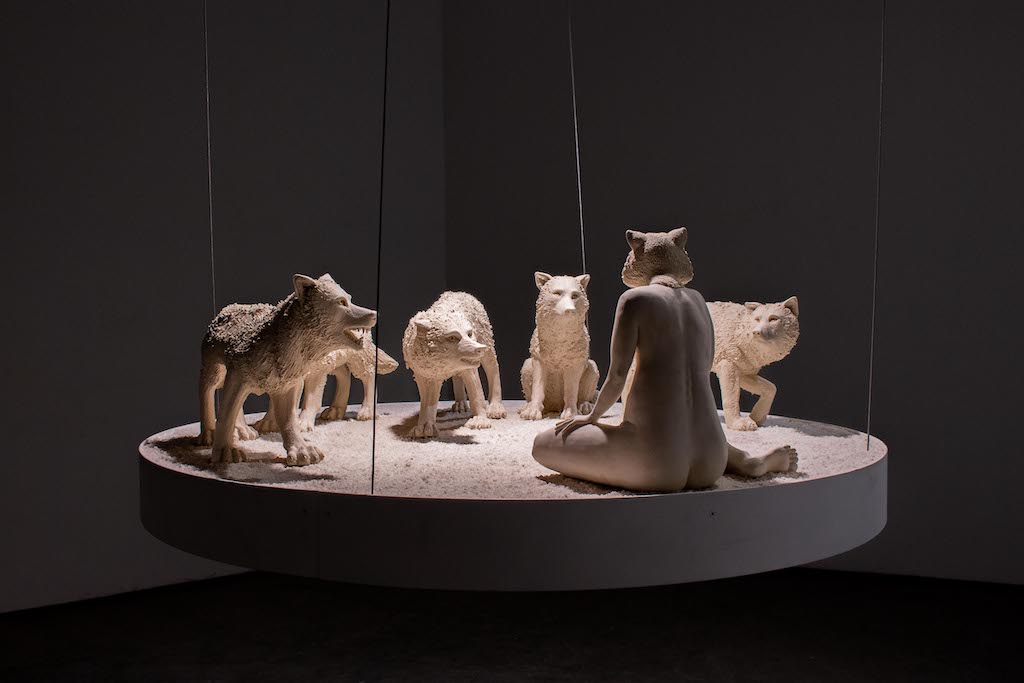 Suspended platform over a pedestal adds more tension and precariousness to the piece they are experiencing as well. Since we are exploring the idea of liminality in identity, I paid close attention around the neck of the anthropomorphic figure and wondered if the figure was wearing a mask (due to a sudden transition between fur and skin) or transitioning/ transforming into something else. I really enjoyed seeing a strong ceramics work among other competitive candidates working in various mediums.
Suspended platform over a pedestal adds more tension and precariousness to the piece they are experiencing as well. Since we are exploring the idea of liminality in identity, I paid close attention around the neck of the anthropomorphic figure and wondered if the figure was wearing a mask (due to a sudden transition between fur and skin) or transitioning/ transforming into something else. I really enjoyed seeing a strong ceramics work among other competitive candidates working in various mediums.
@myungahnceramics
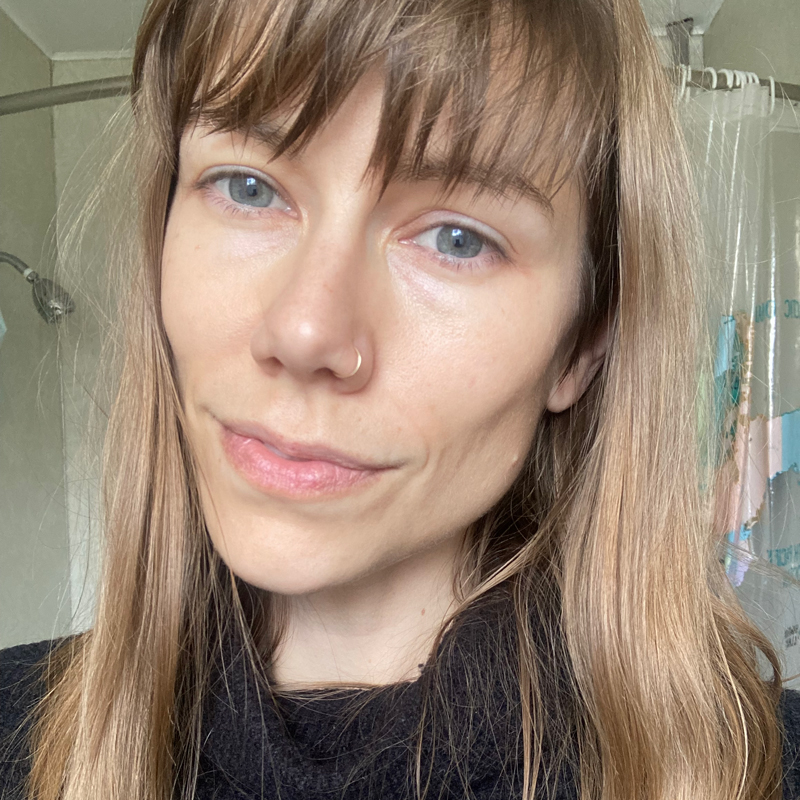
Rebecca A Madsen, MFA, Montana State University
There is an Elton John album cover (actually it was a CD) that lives my memory for reasons I don’t understand. I could describe it to you in vague strokes of color (though I won’t). But I have no idea what songs are on the album or the name of it. I can tell you it was my mother’s. And that she had bought it. And that she loved Elton John. This snapshot of a memory-just an image really-is so prominent in my memory that I can’t help but think it must be significant somehow. The persistence of the image insists upon it. Though I don’t know why.
Jurors Choice: Tian Mi Mi by Yang Weihan
Tian Mi Mi is a 26 minute film shot on VHS wherein the artist Yang Weihan attempts to recreate a ‘memory image’ from his childhood. A persistent visual from flipping through his mother’s album collection as a child. Weihan explains, “I remember Teresa [Teng–a beloved Chinese singer] sits on the back seat of something (probably a bike or tricycle), slightly turns around with a subtle, mysterious, smiley facial expression. Many years passed, that frame […] still remains in my mind, without a clear reason, and jumped out now and then, vividly. I want to make it into a “real”, tangible picture.”
But there is no recreating the past. There is no capturing a memory. It will wriggle free from our clumsy, desperate grasp. Weihan’s attempt to recreate his specific memory image yielded only the realization that “what he wanted was unachievable, as memory is not a specific image that we can claim every detail of […]” Weihan submitted a handful of stills from this 26 minutes of tape. It was this detail shot that, for me, held the spirit of the artist’s endeavor best.
I see in this image of a young girl, looking back, about to smile; so much about memory and time and album covers and bicycles and parents and children and life.
www.rebeccaamadsen.com
@rebecca_a_madsen
